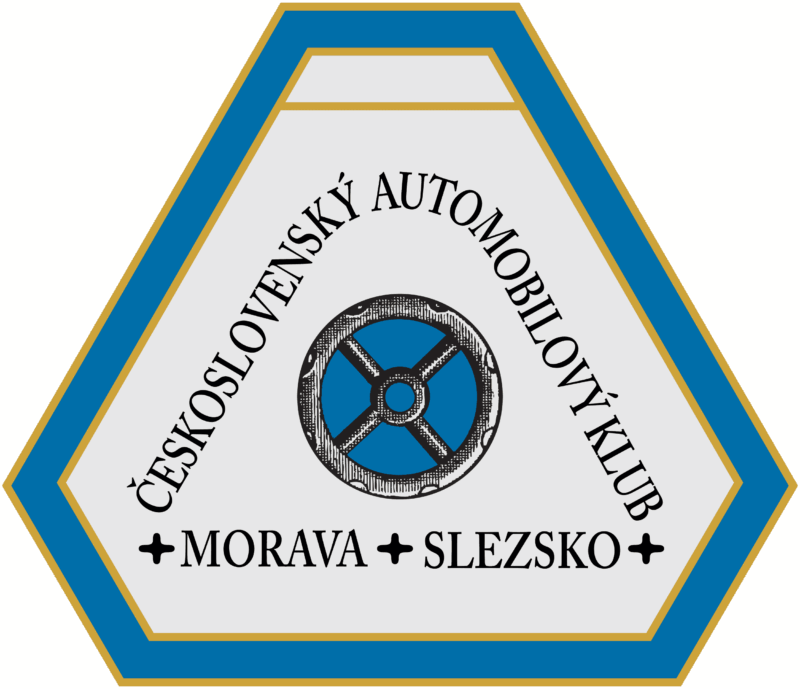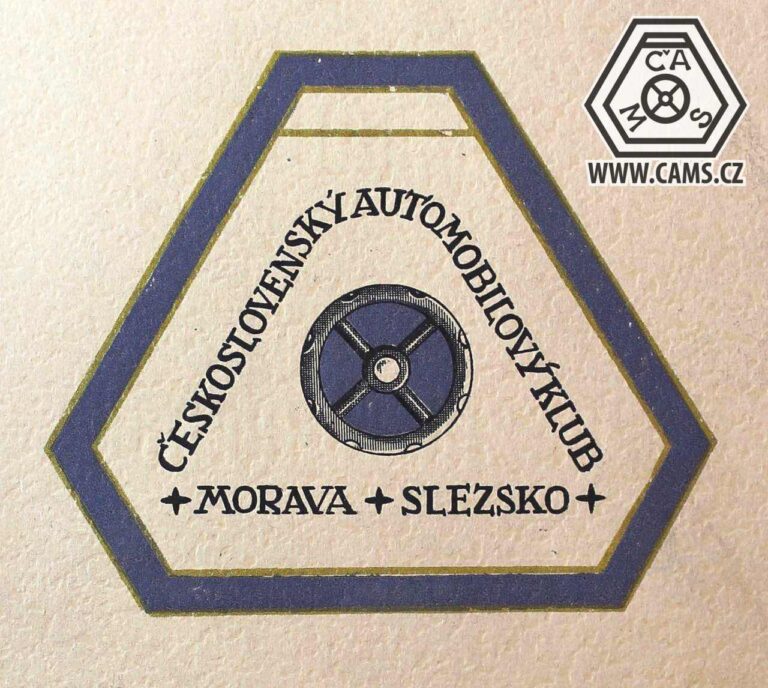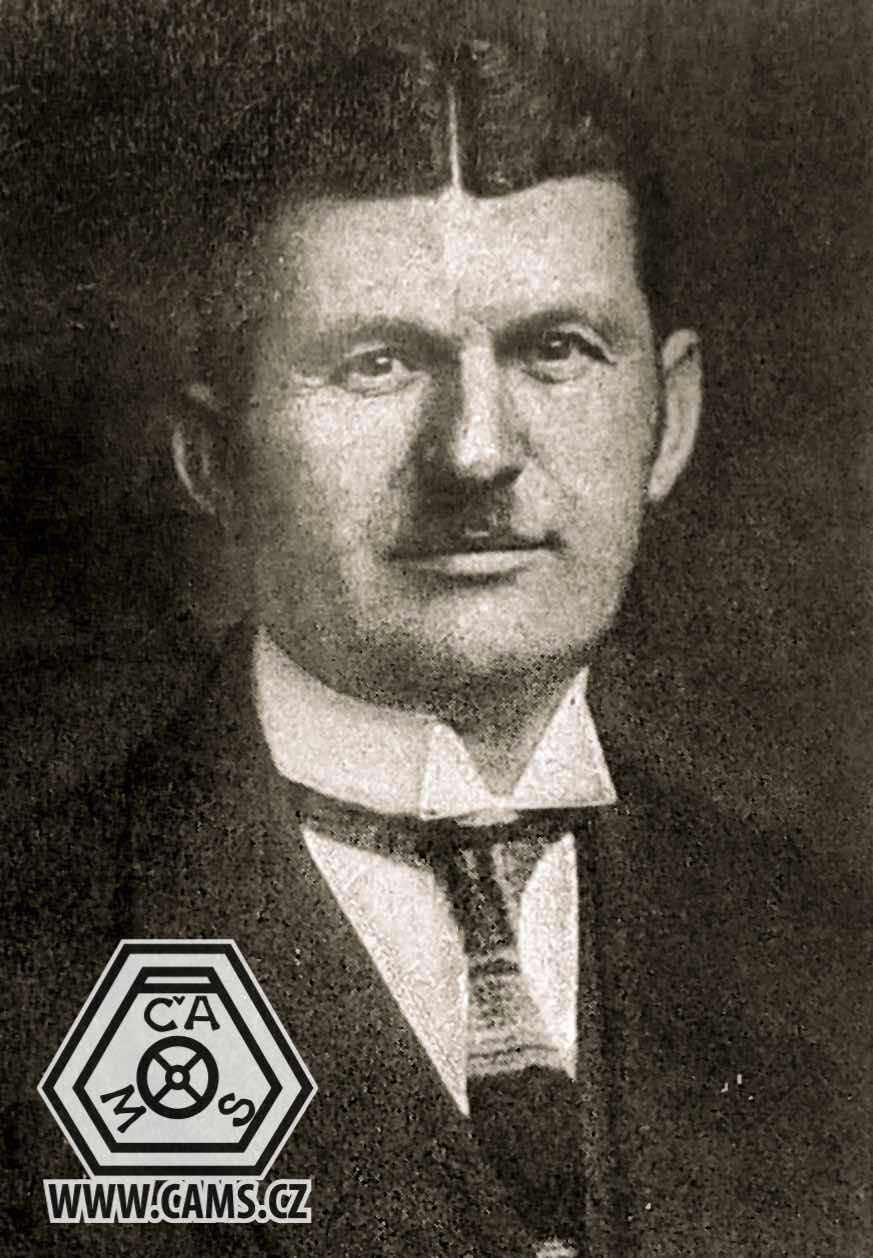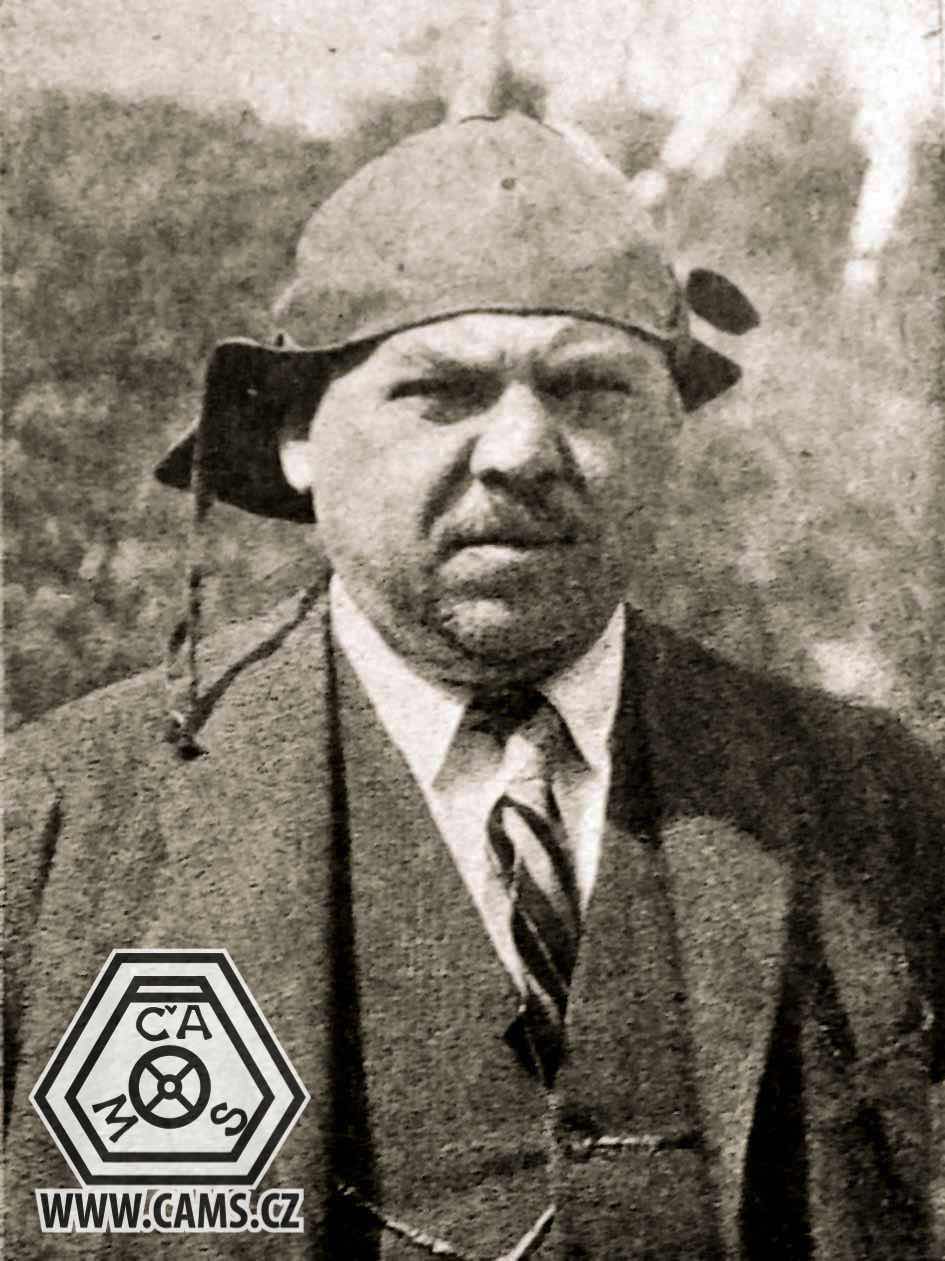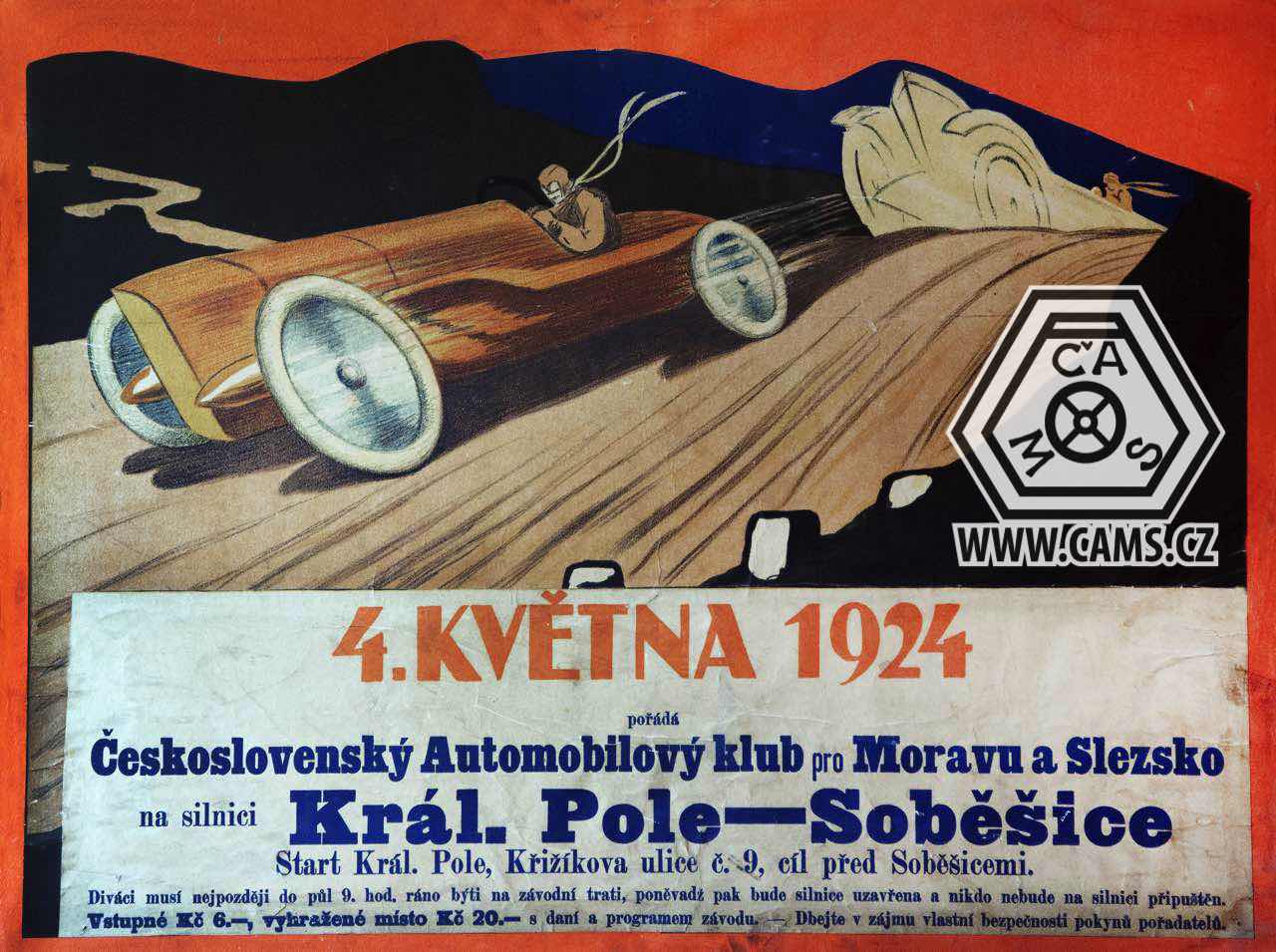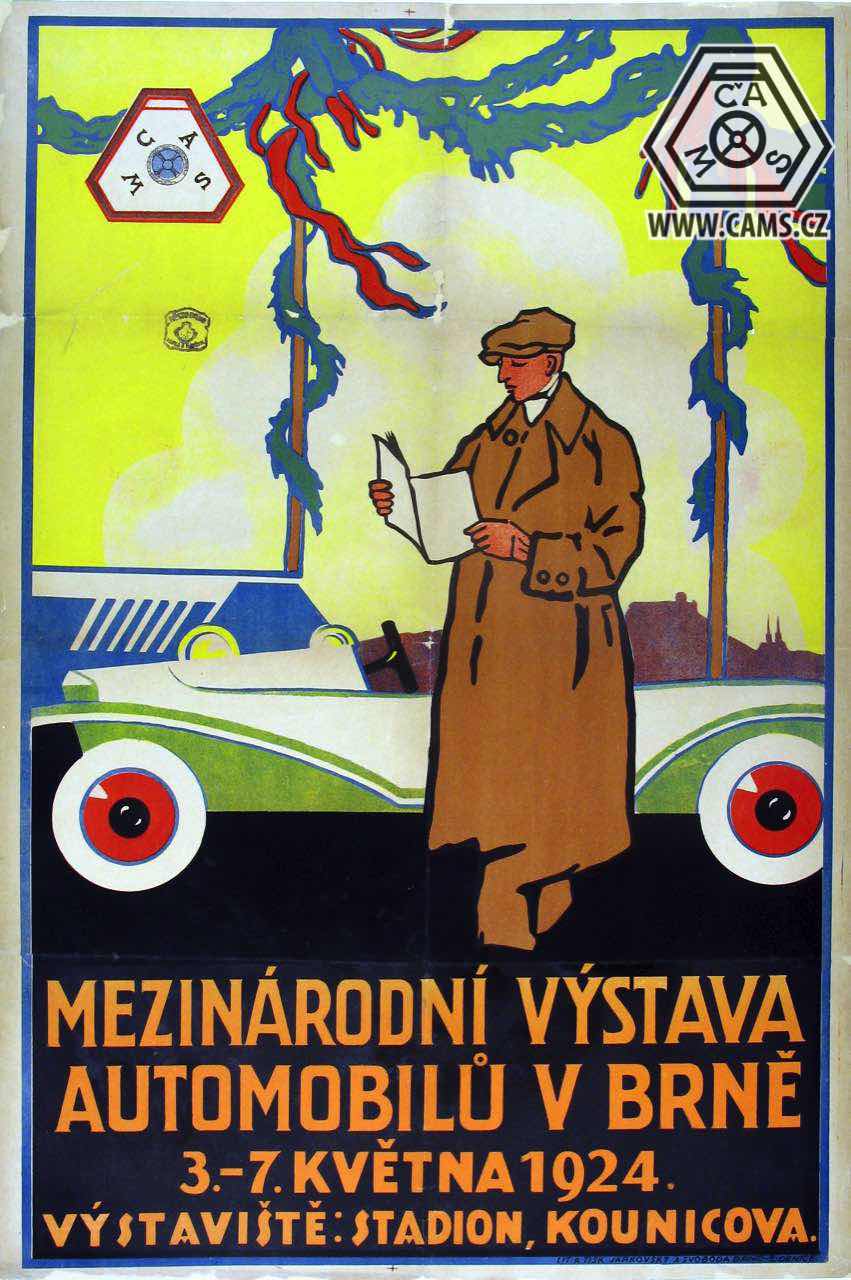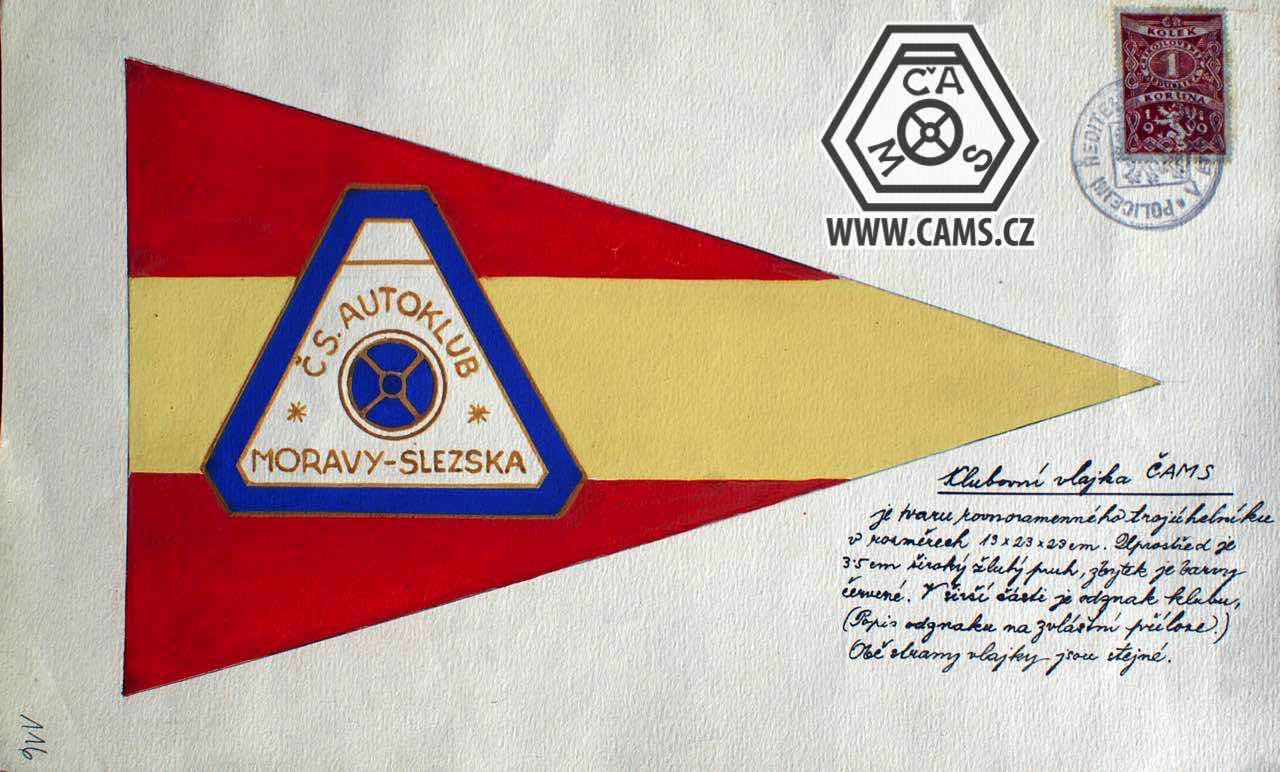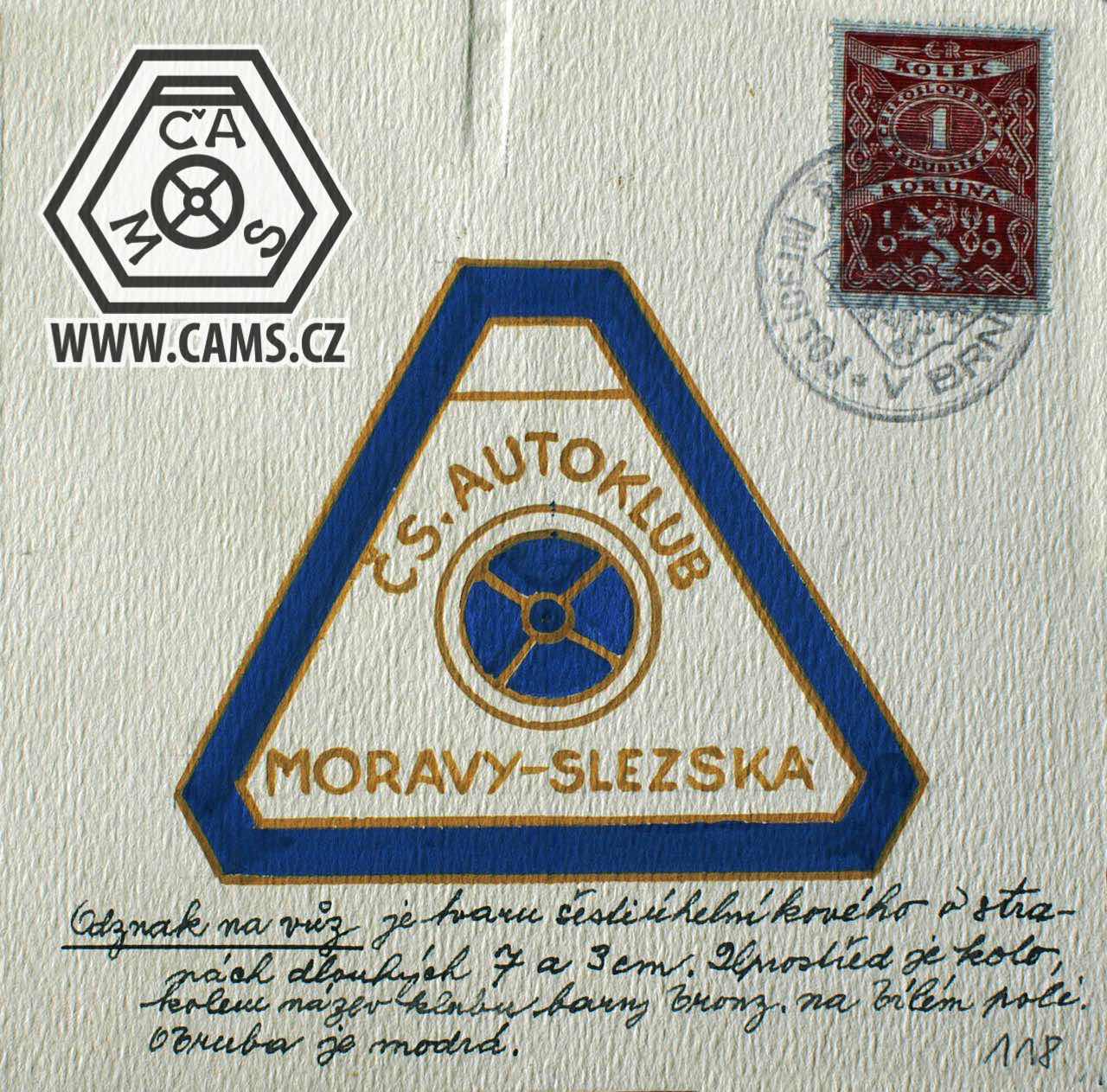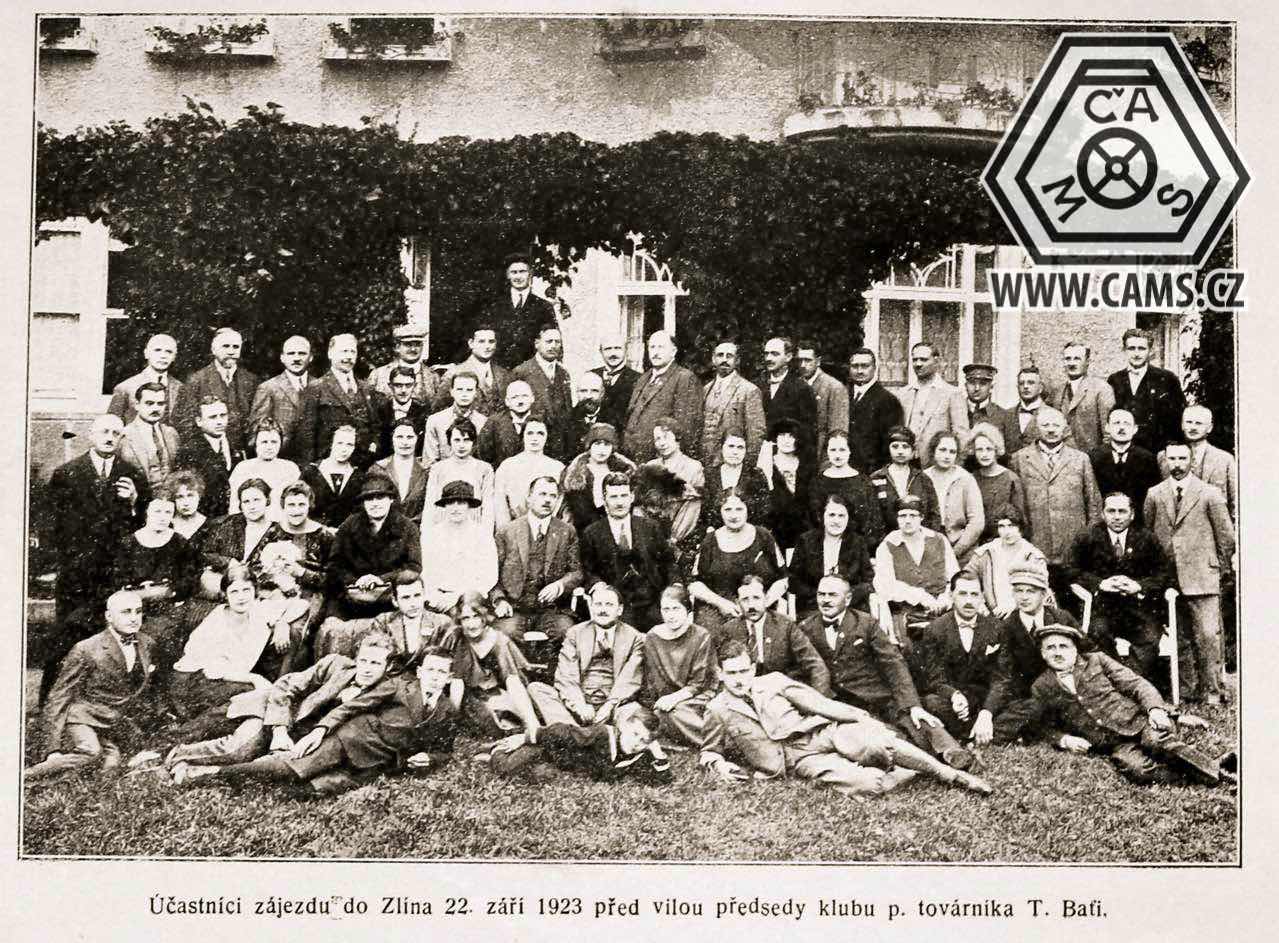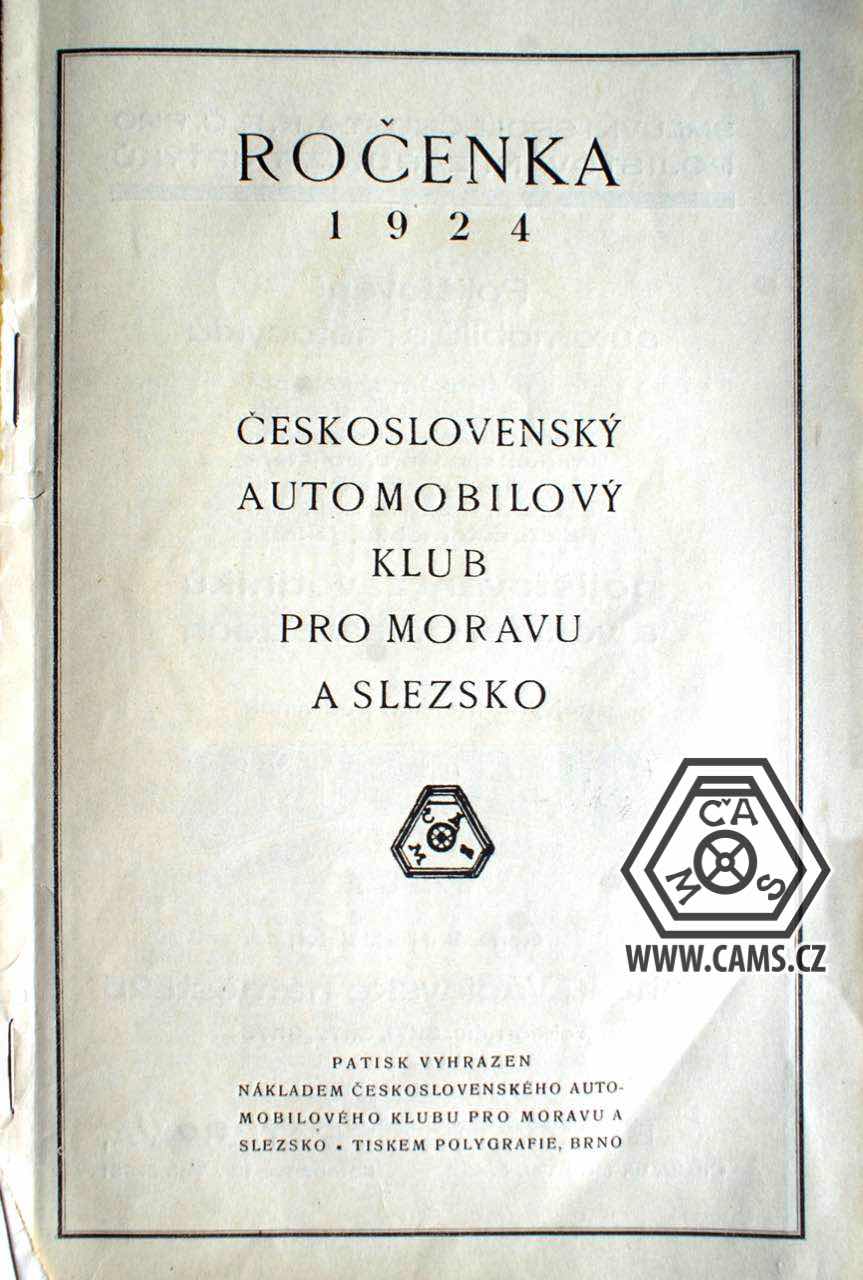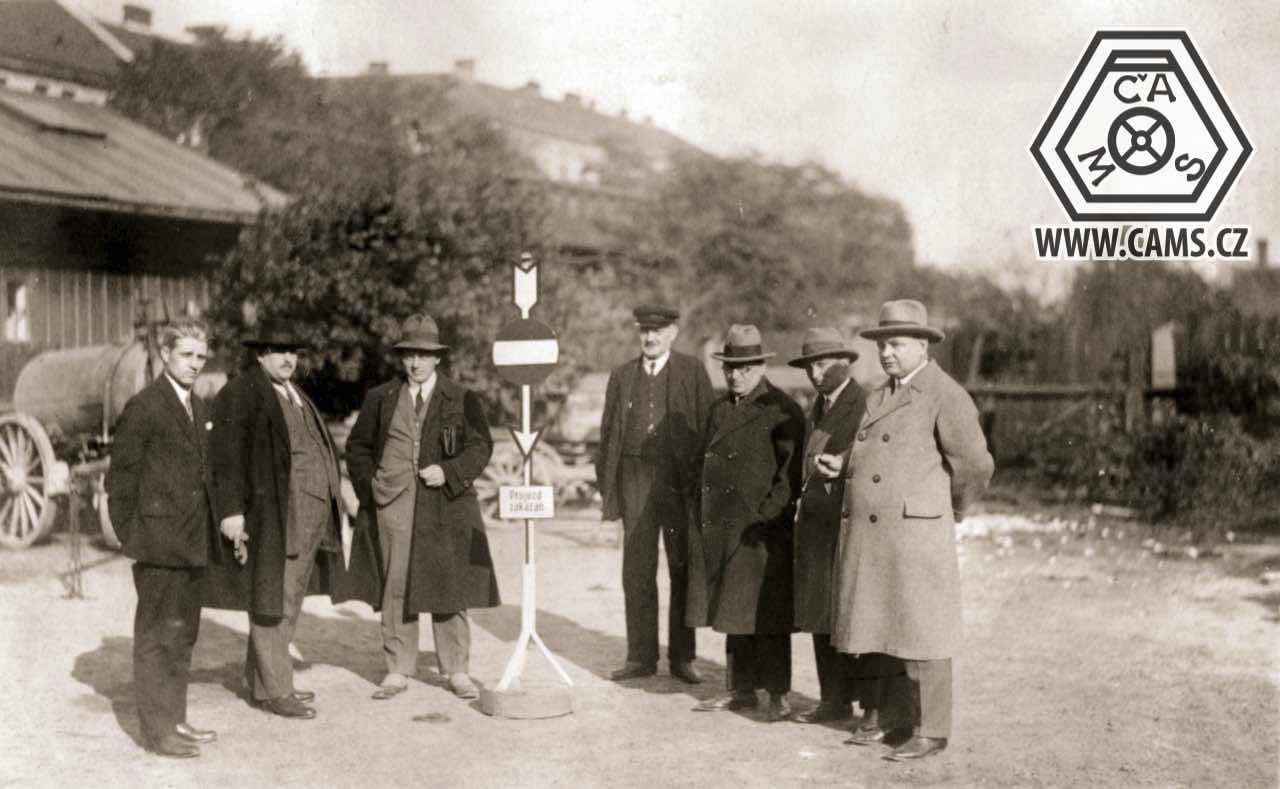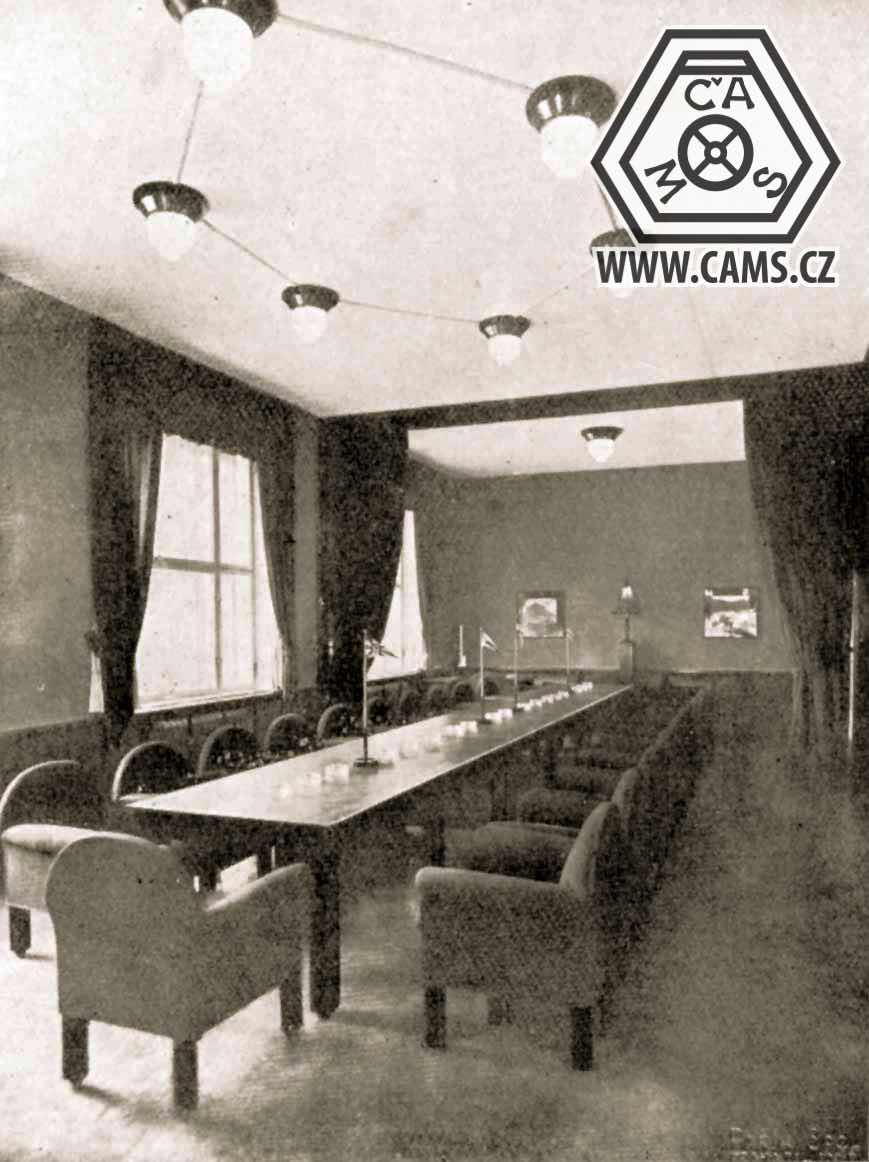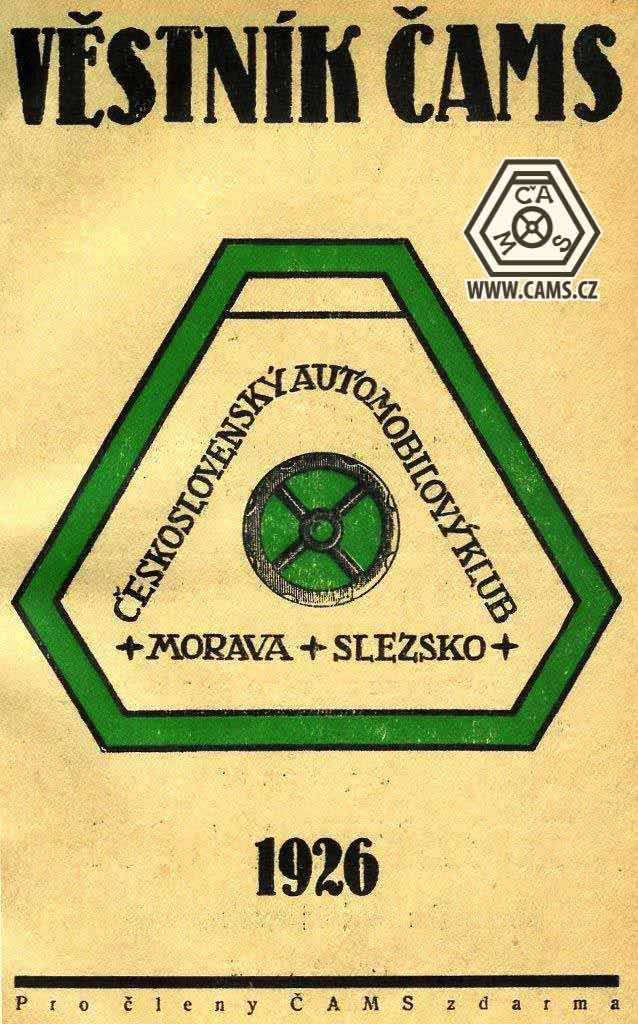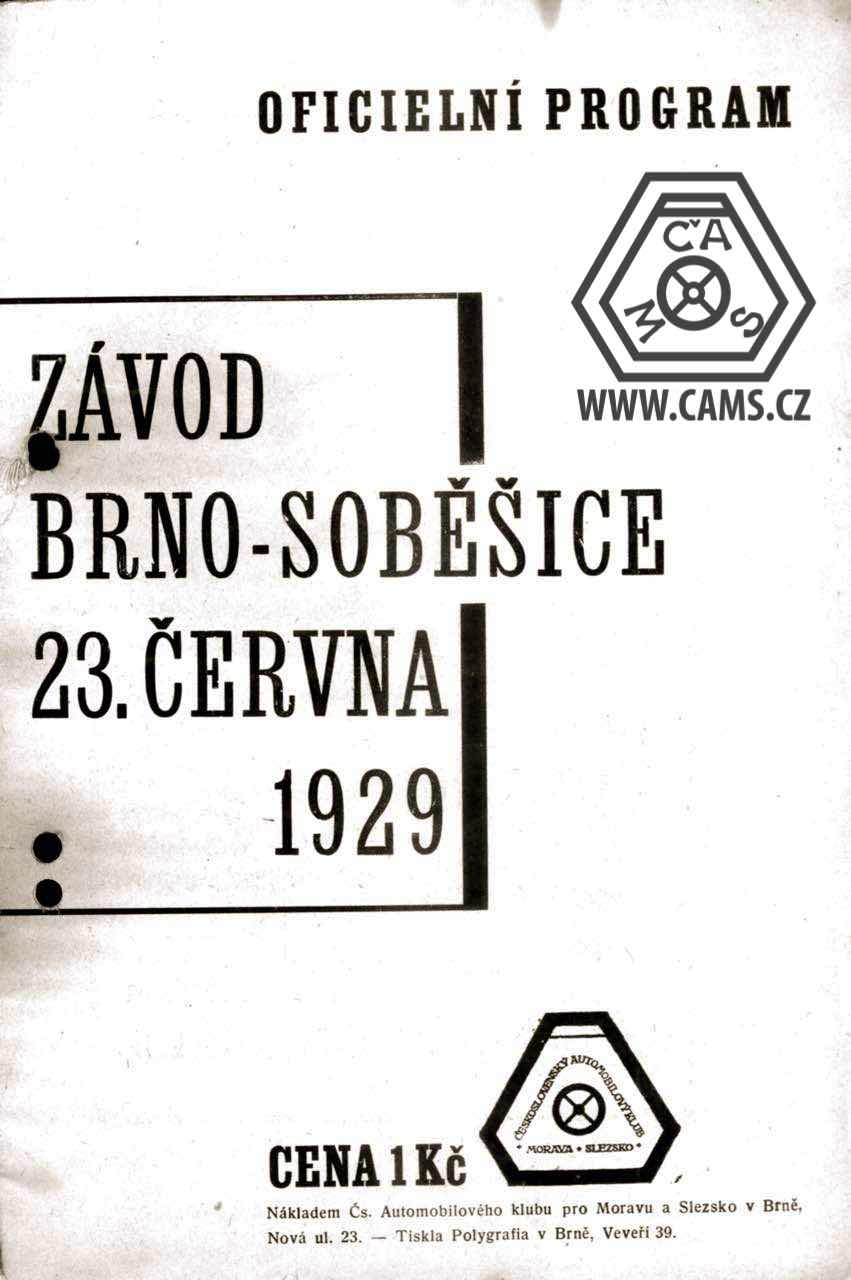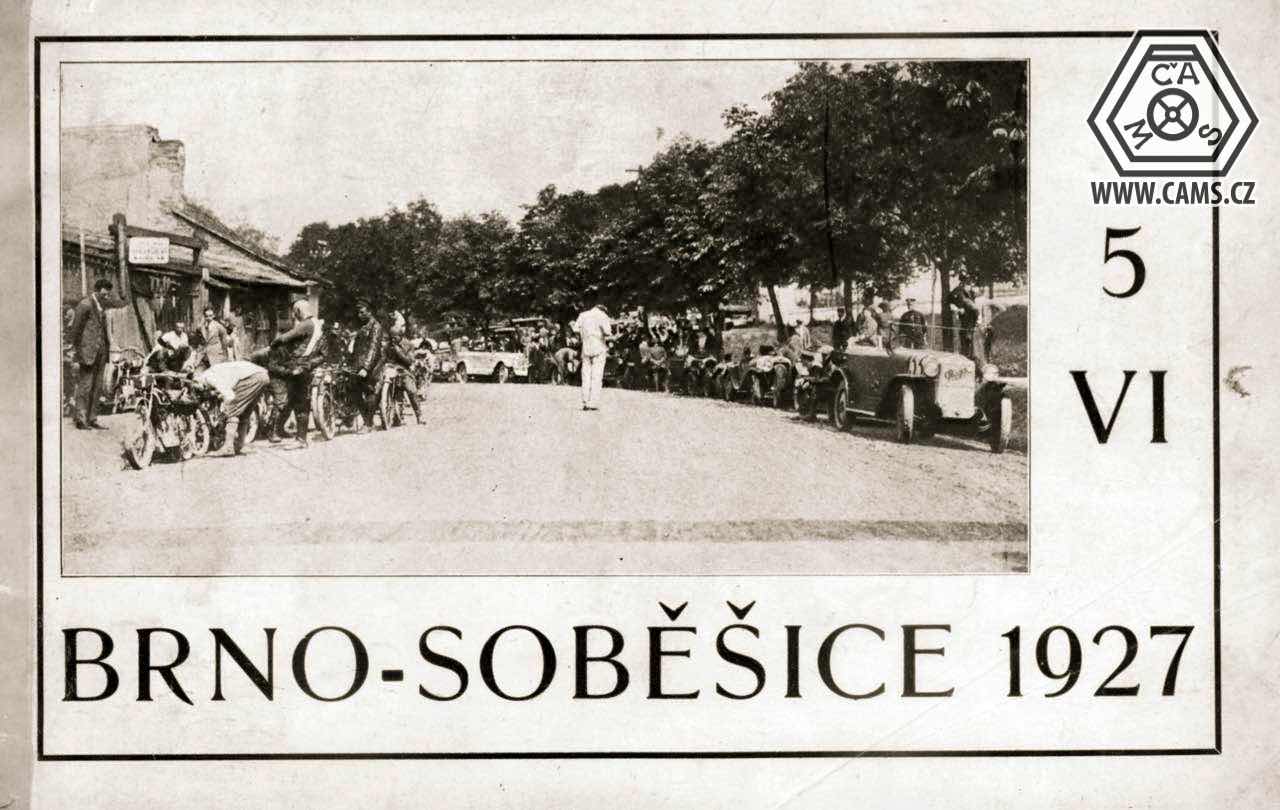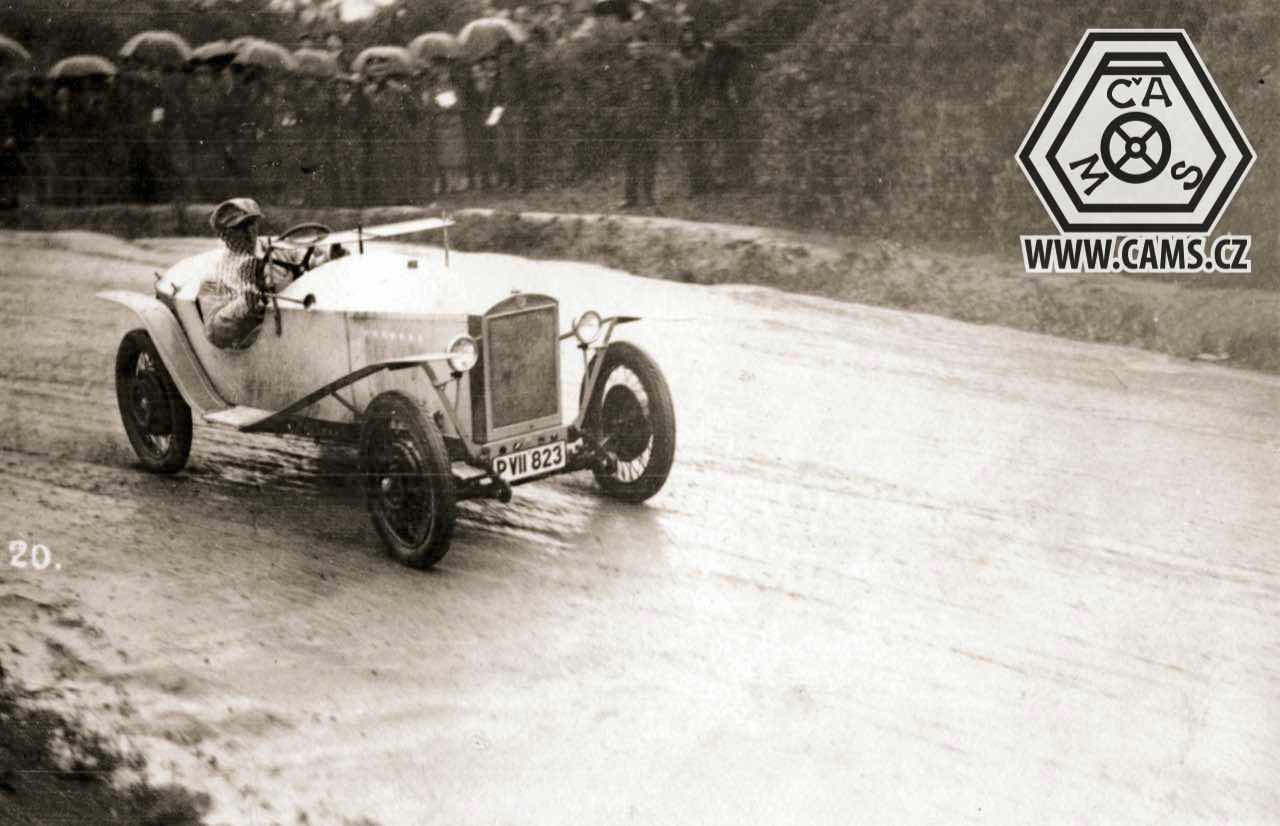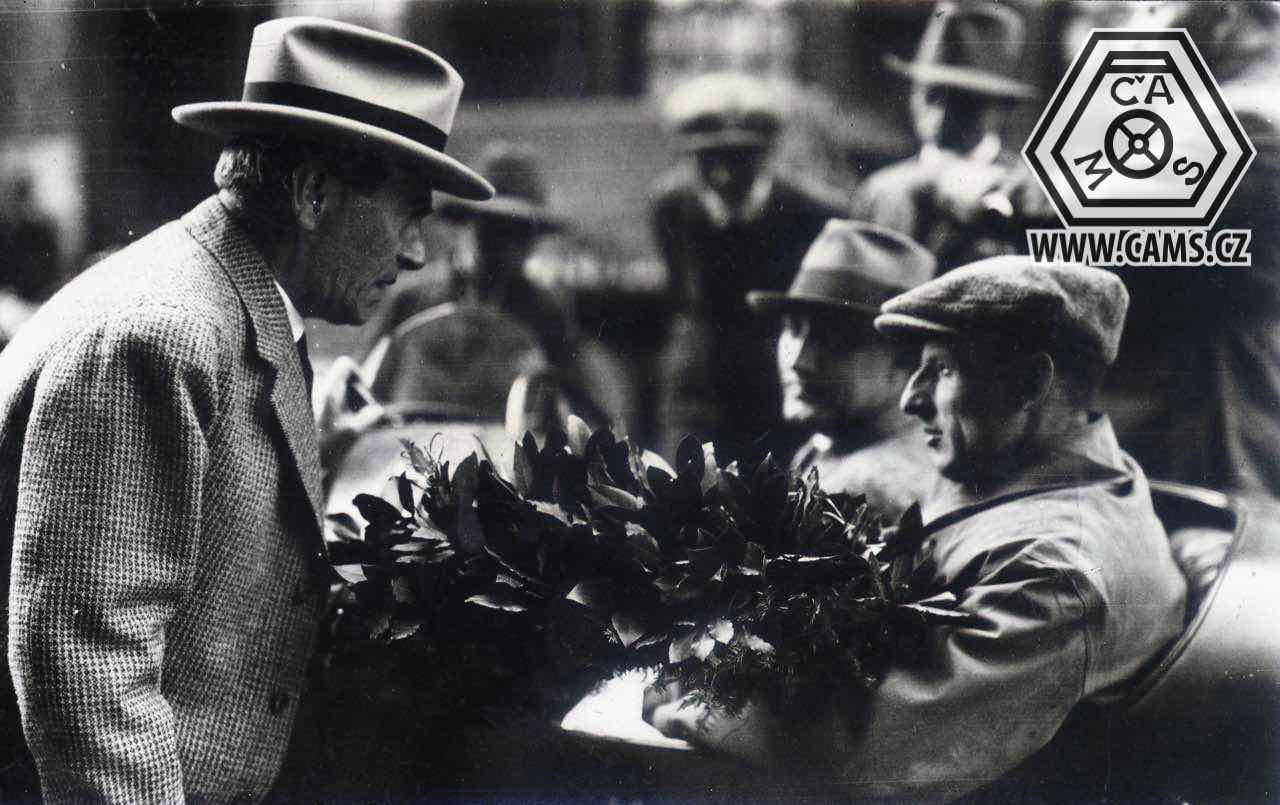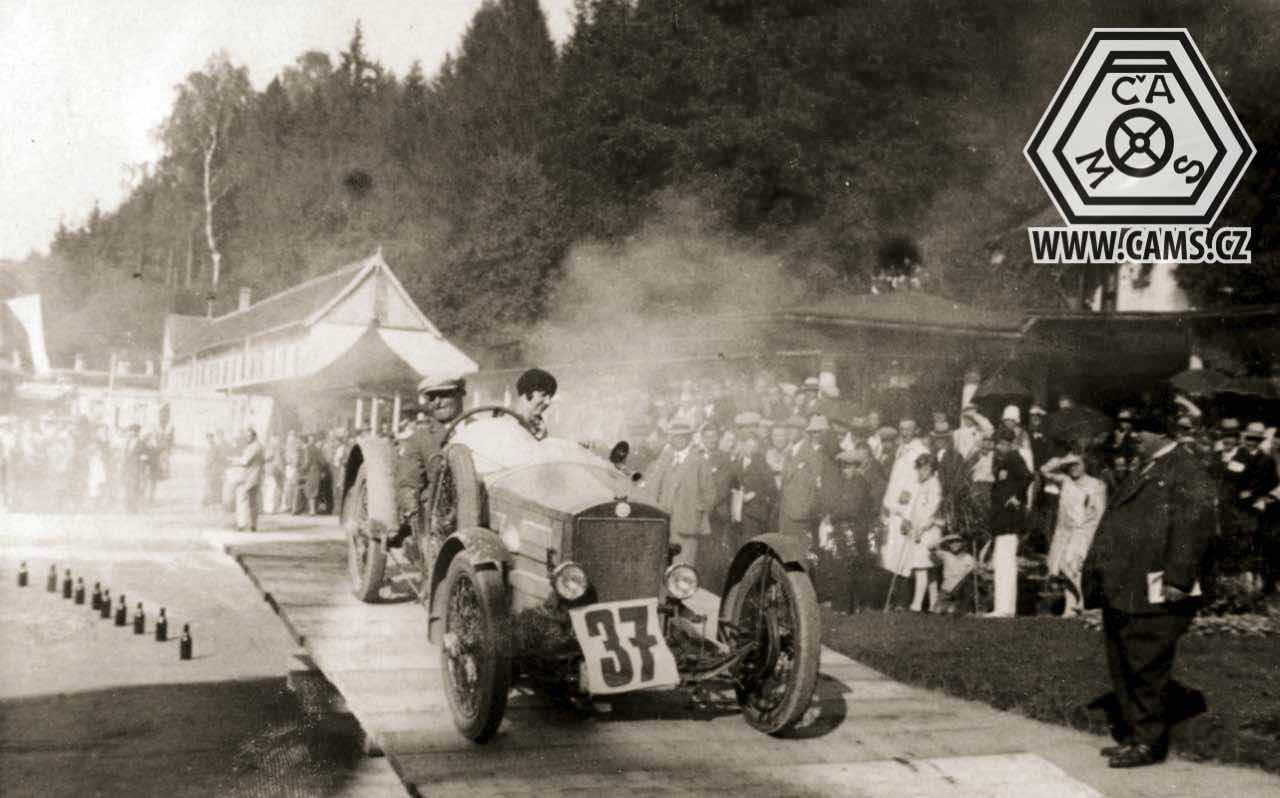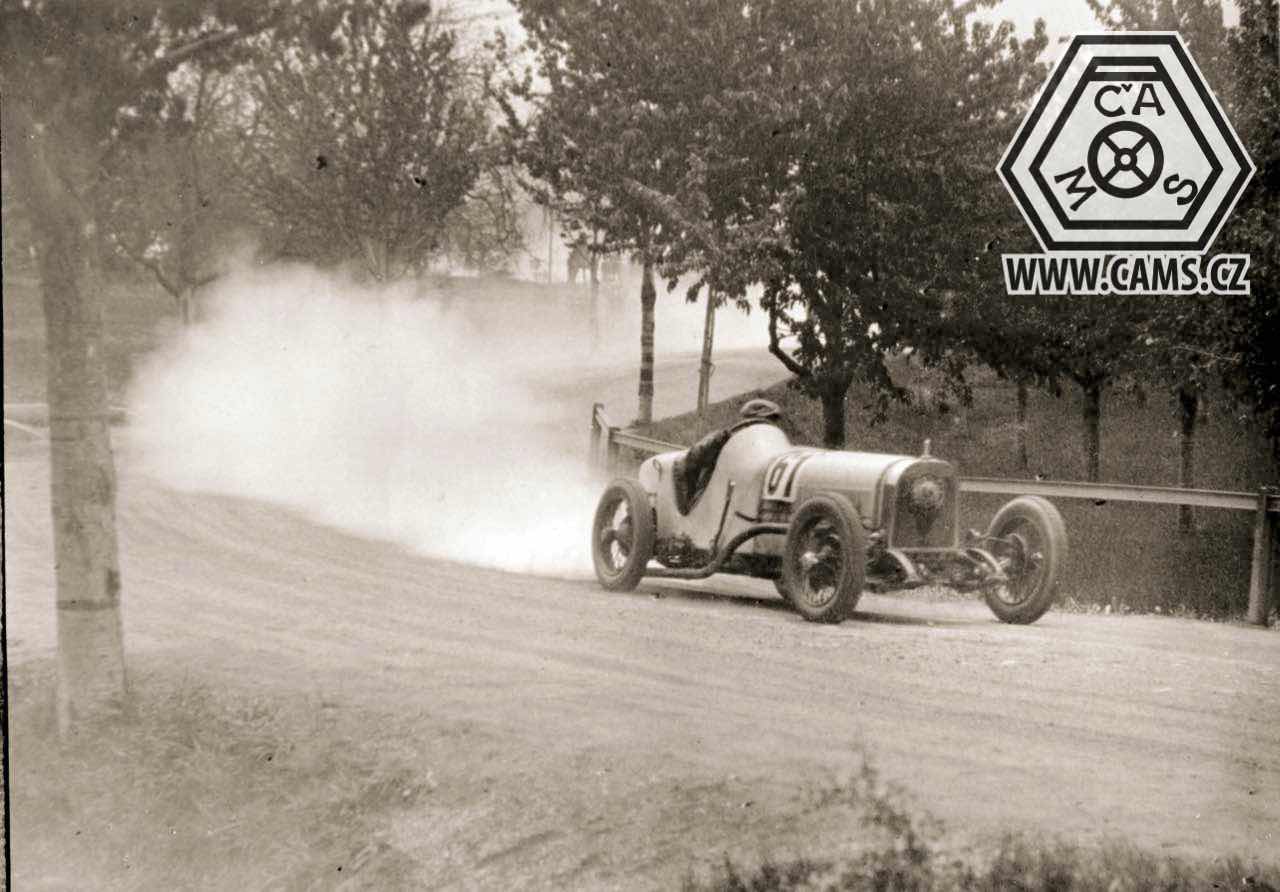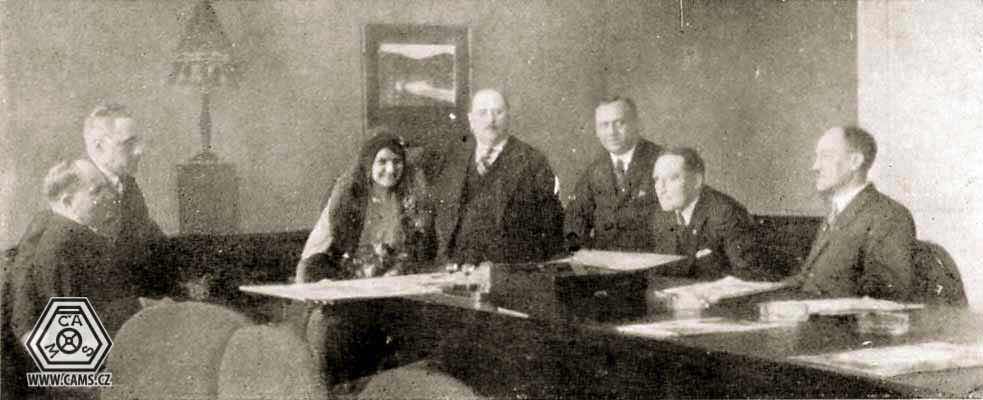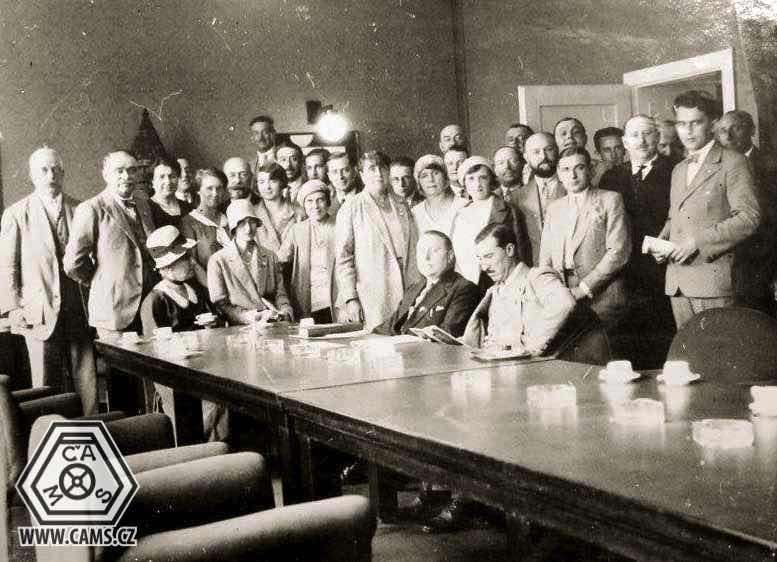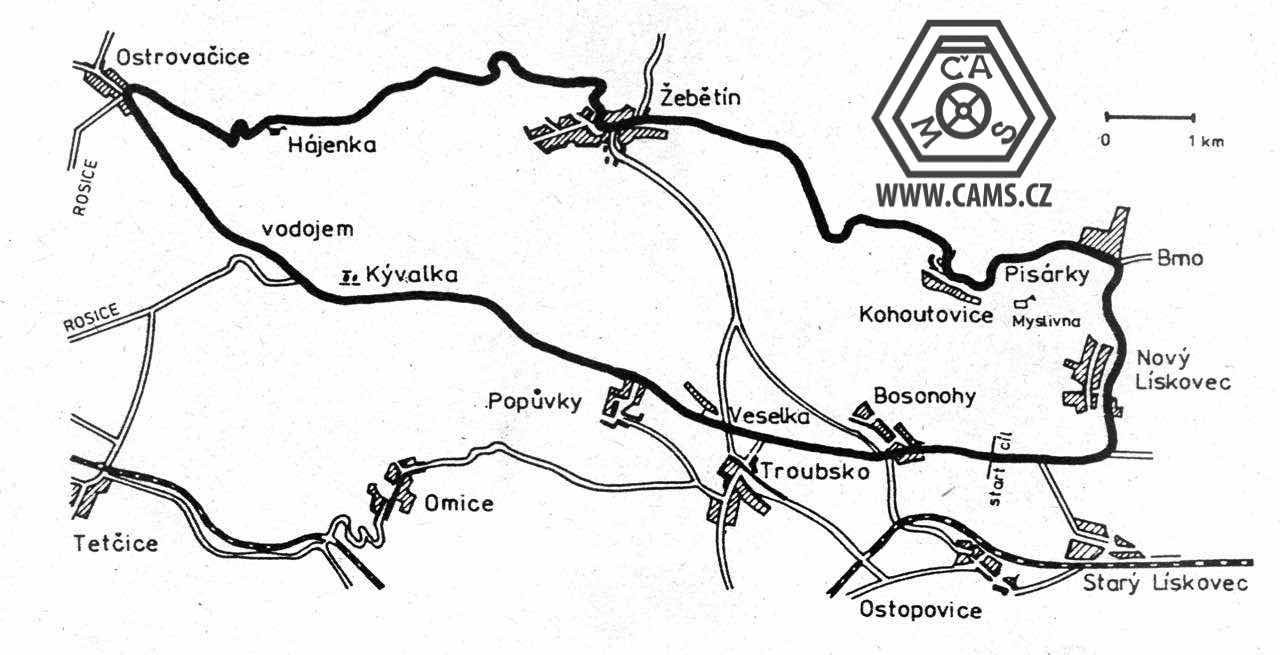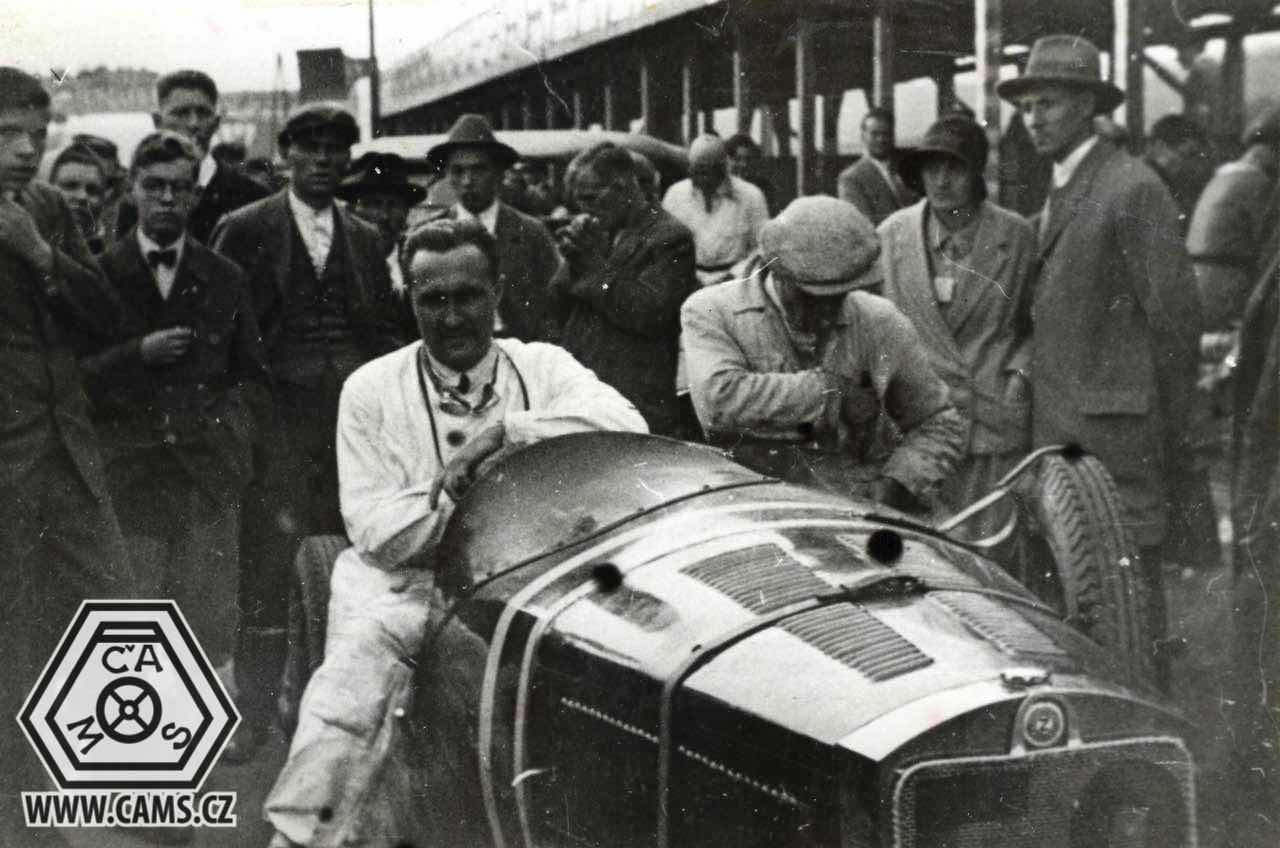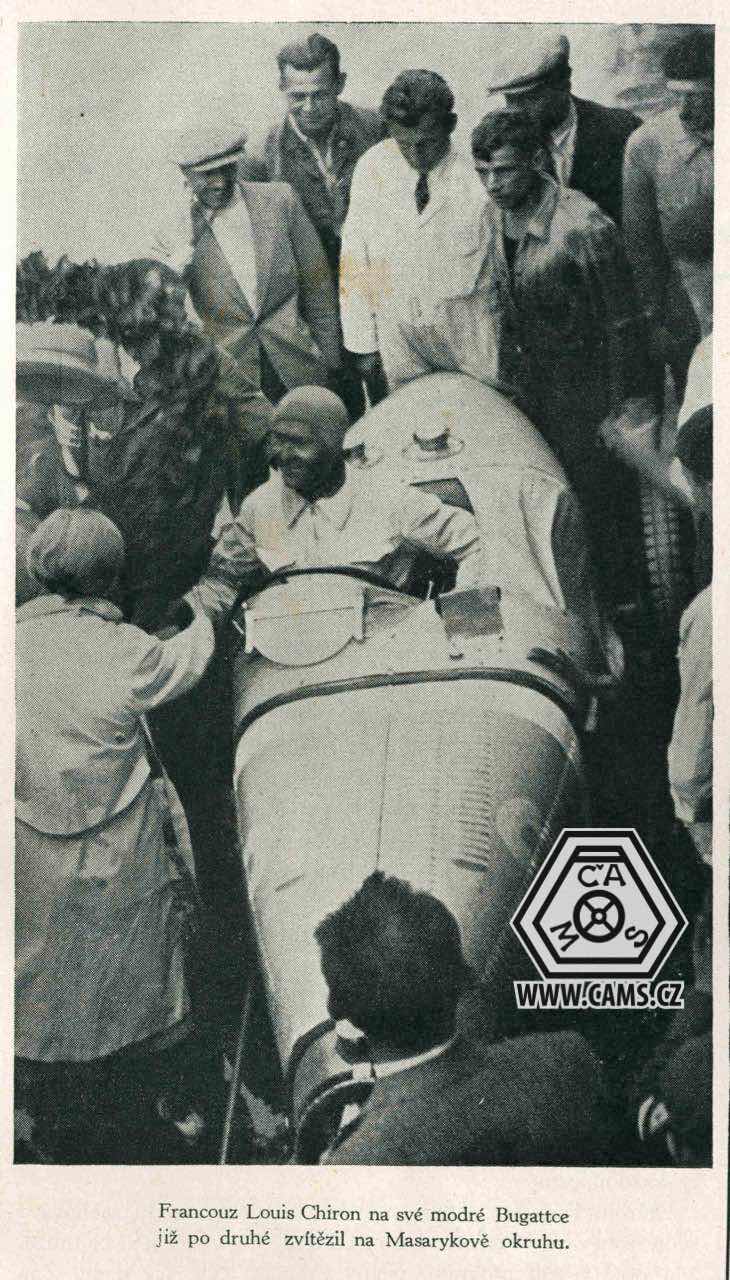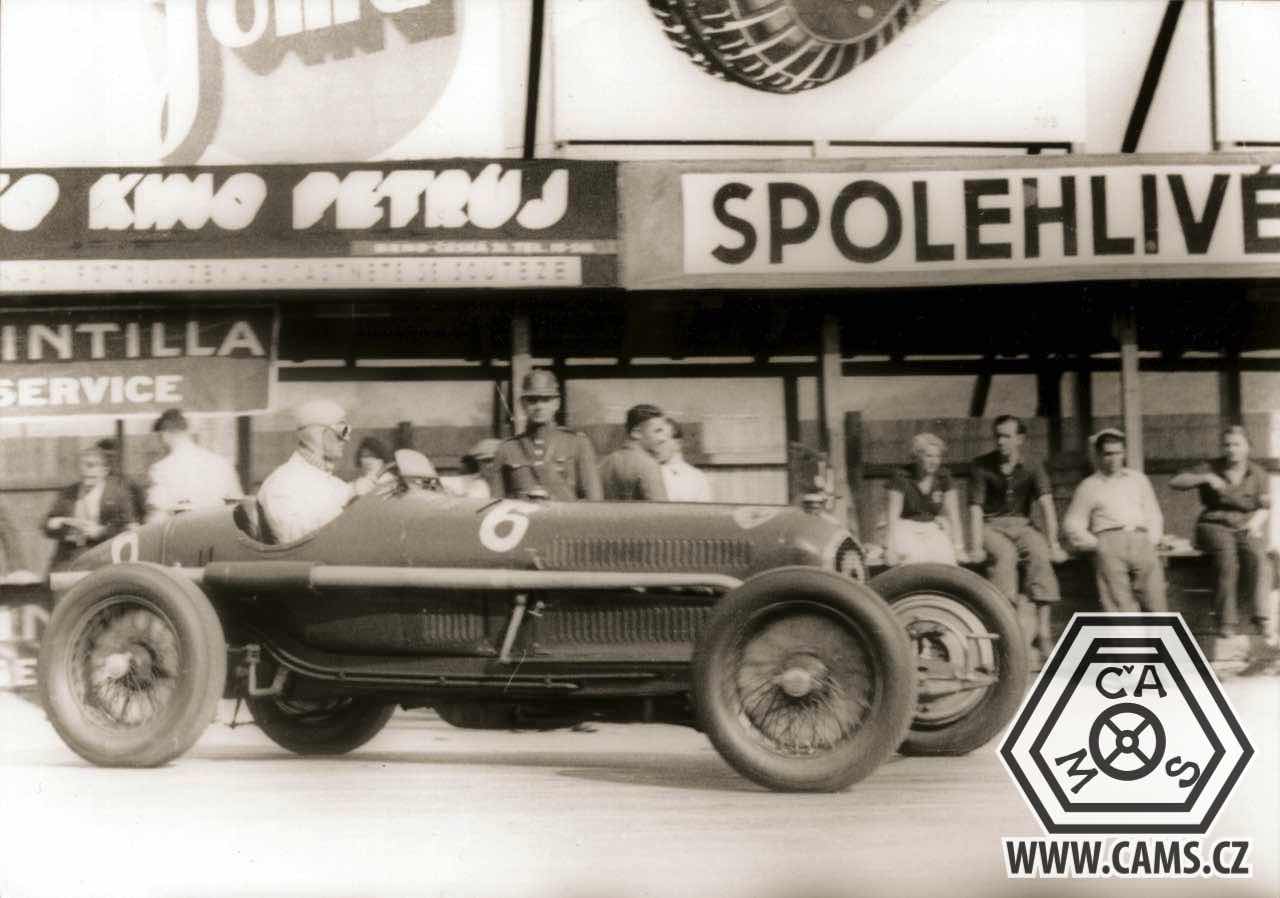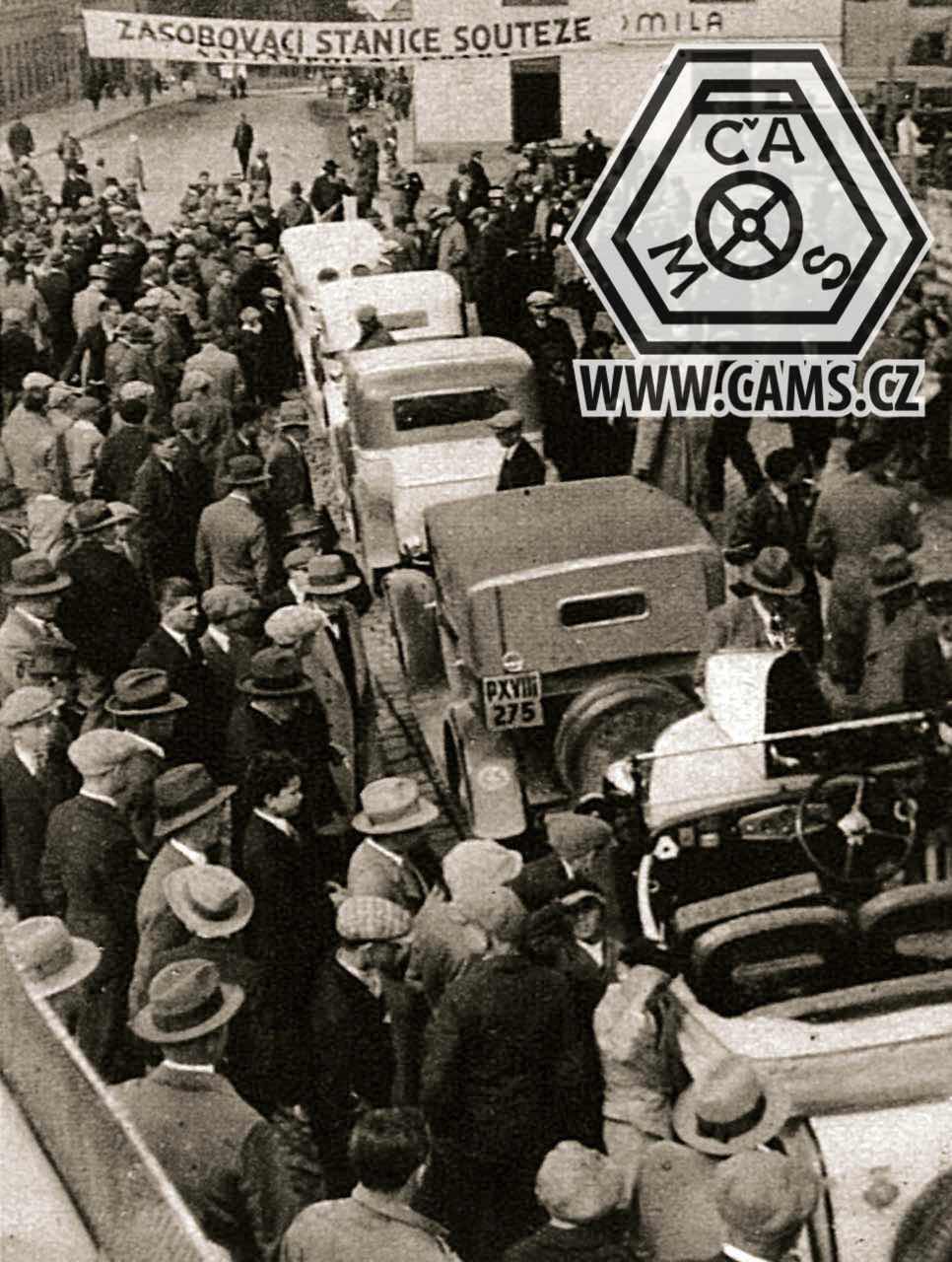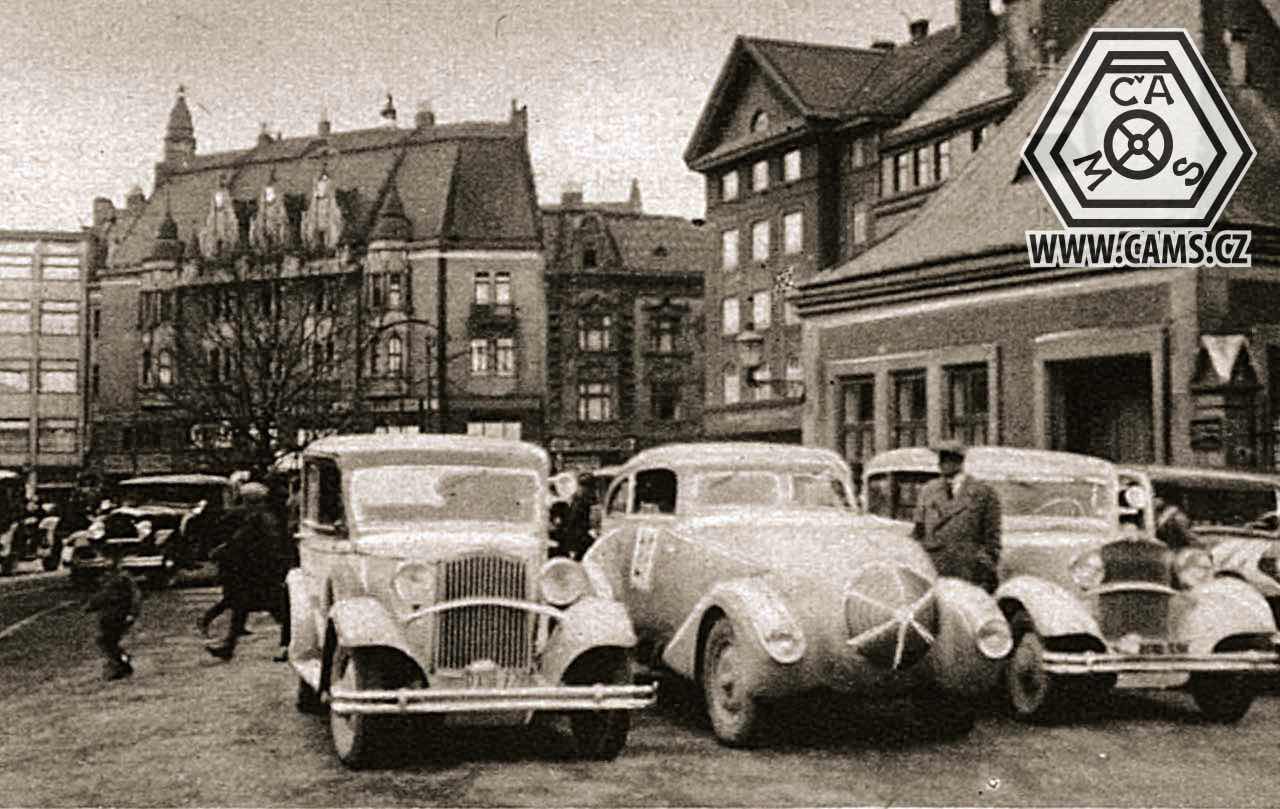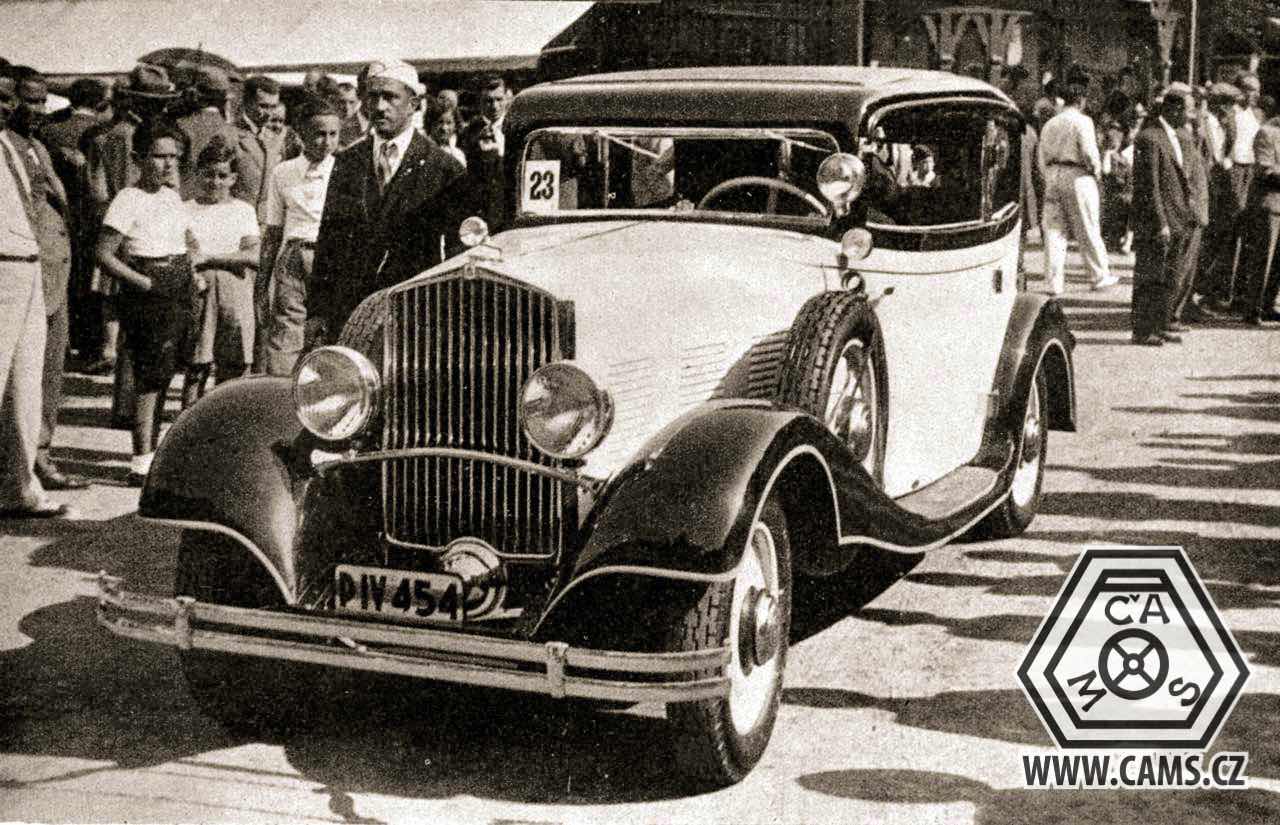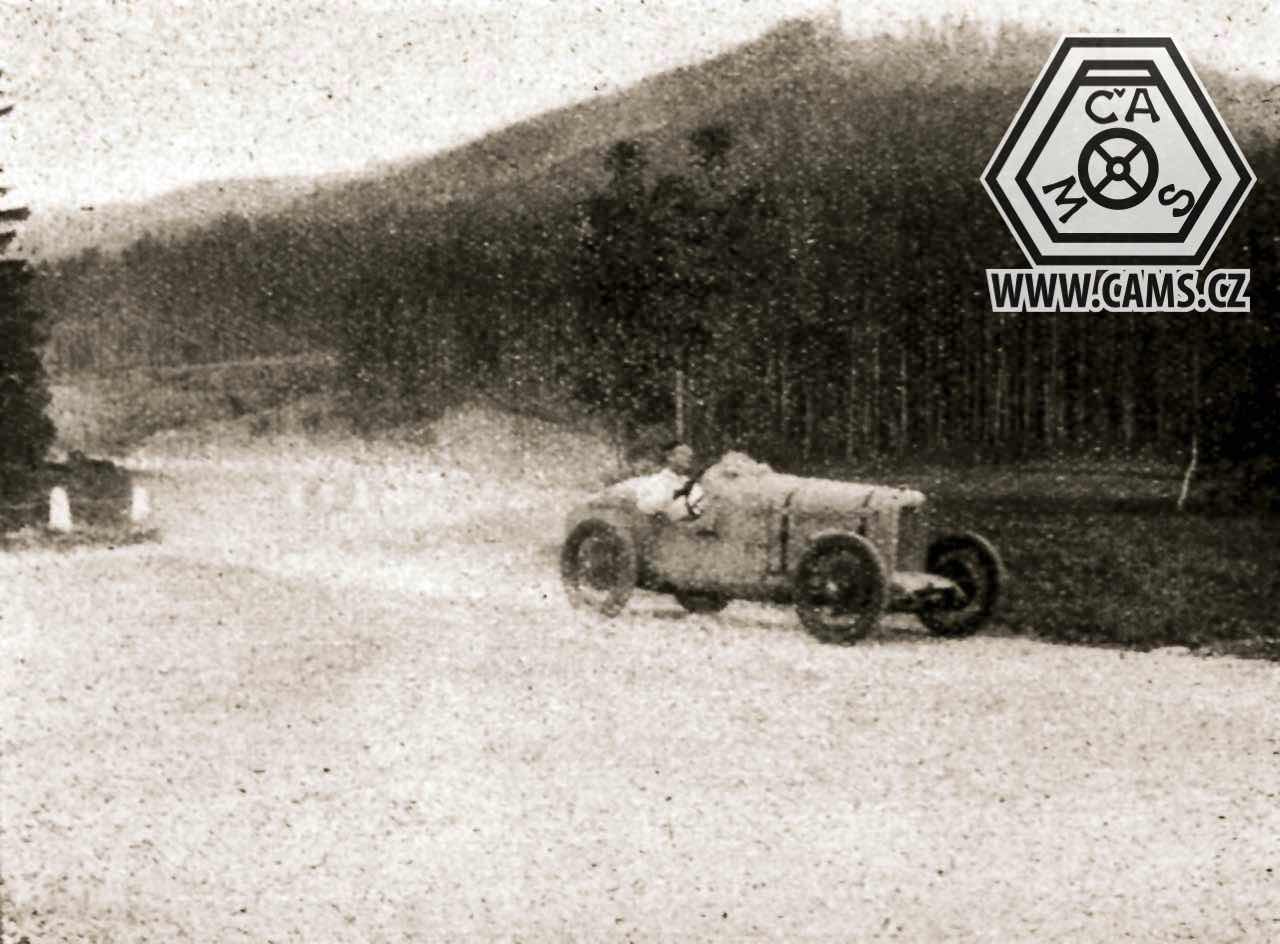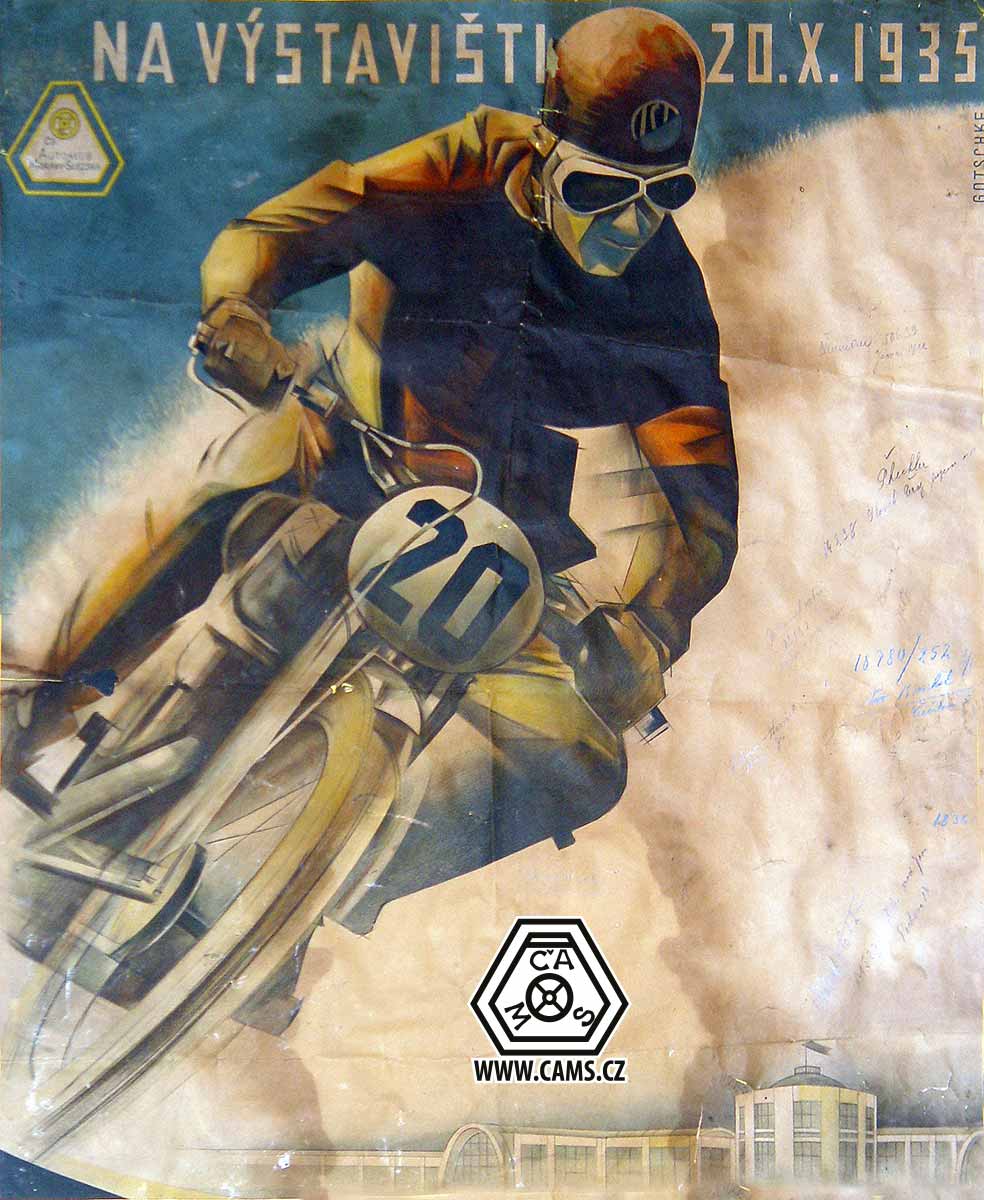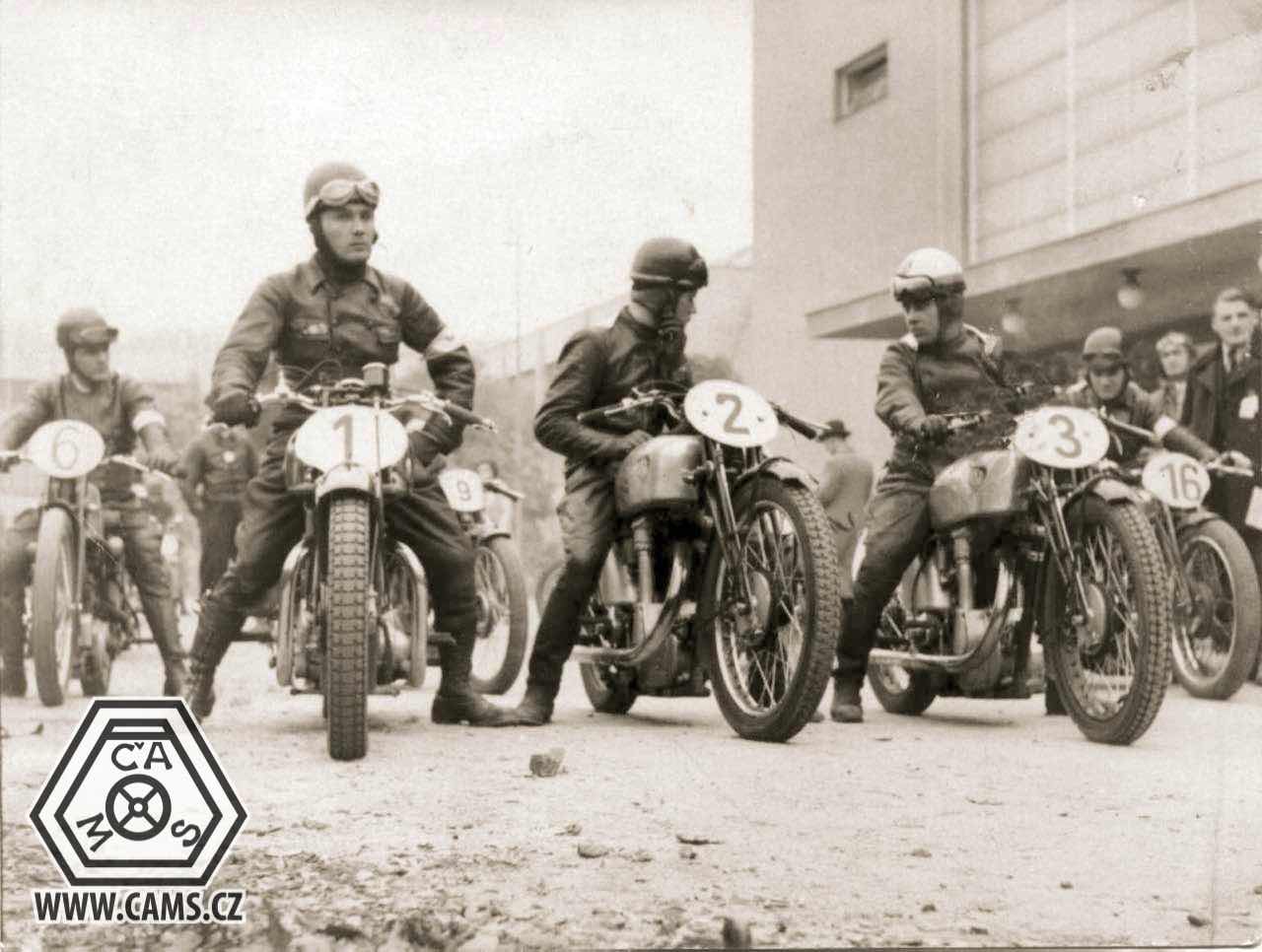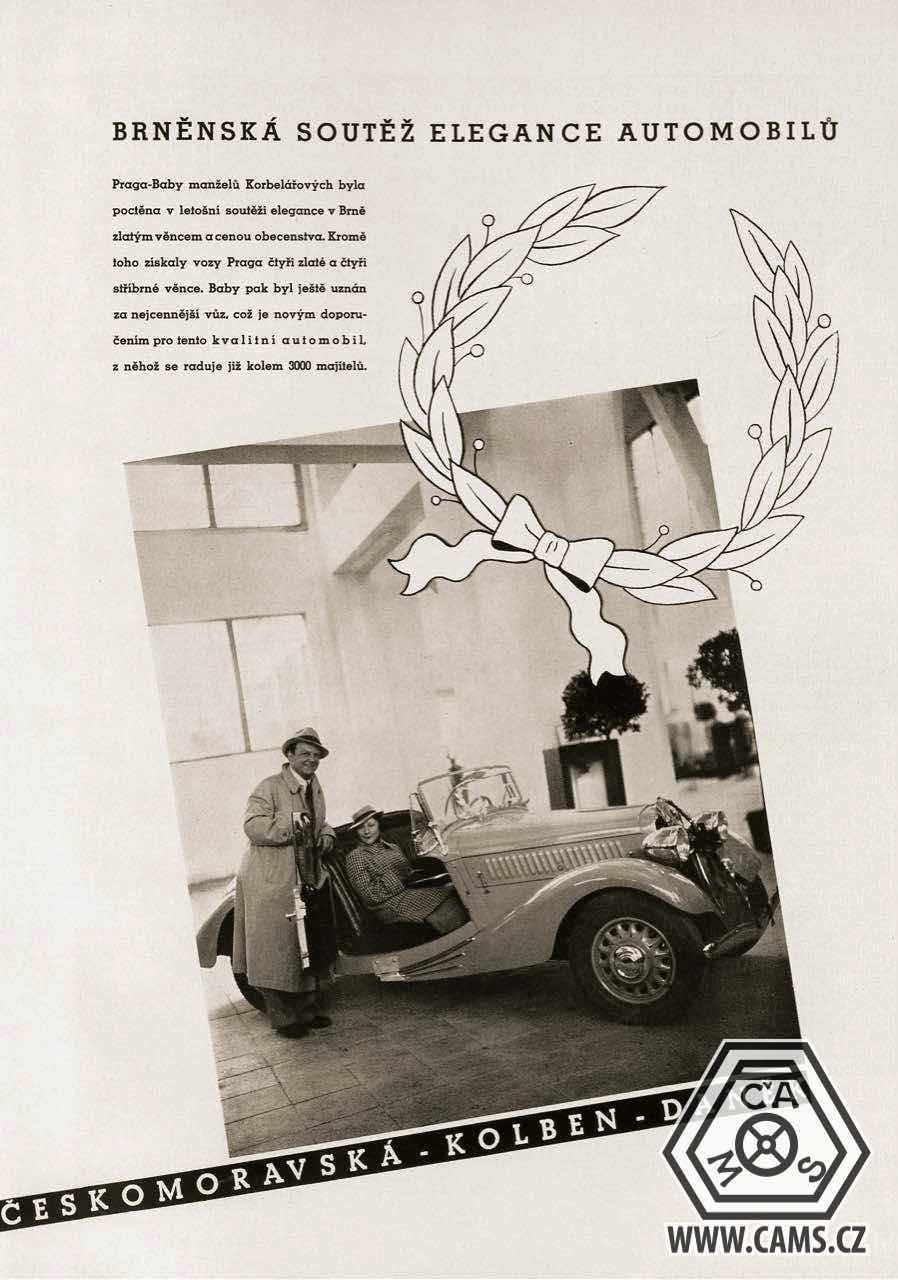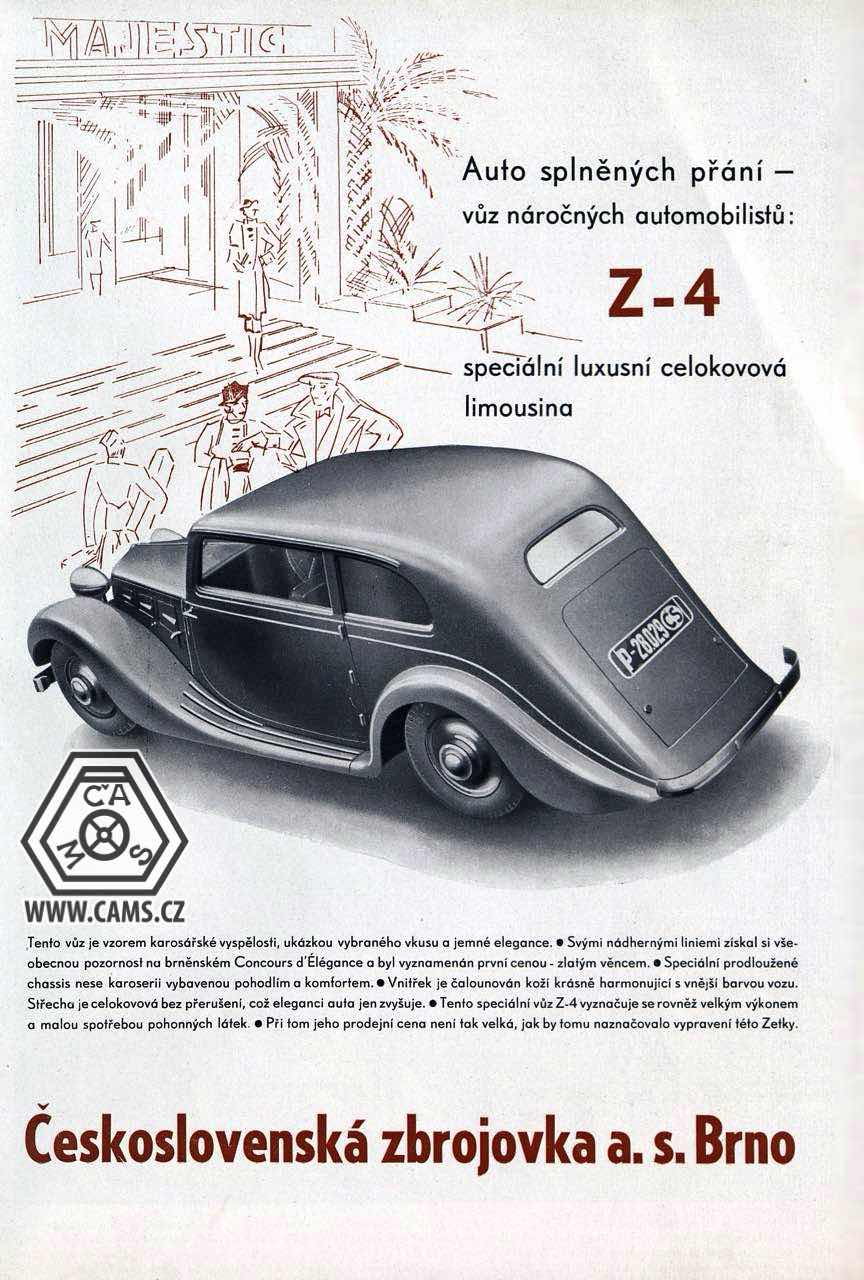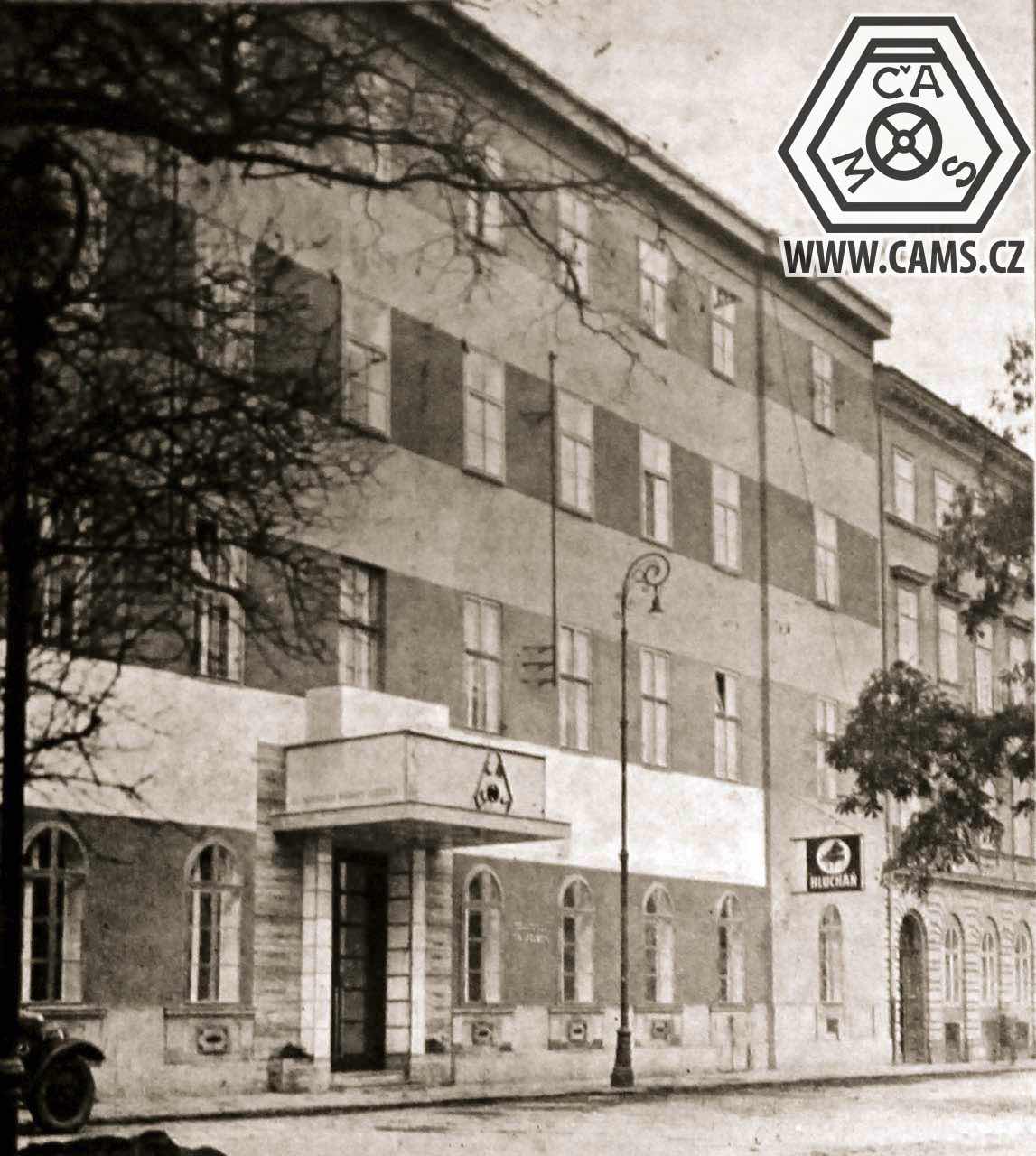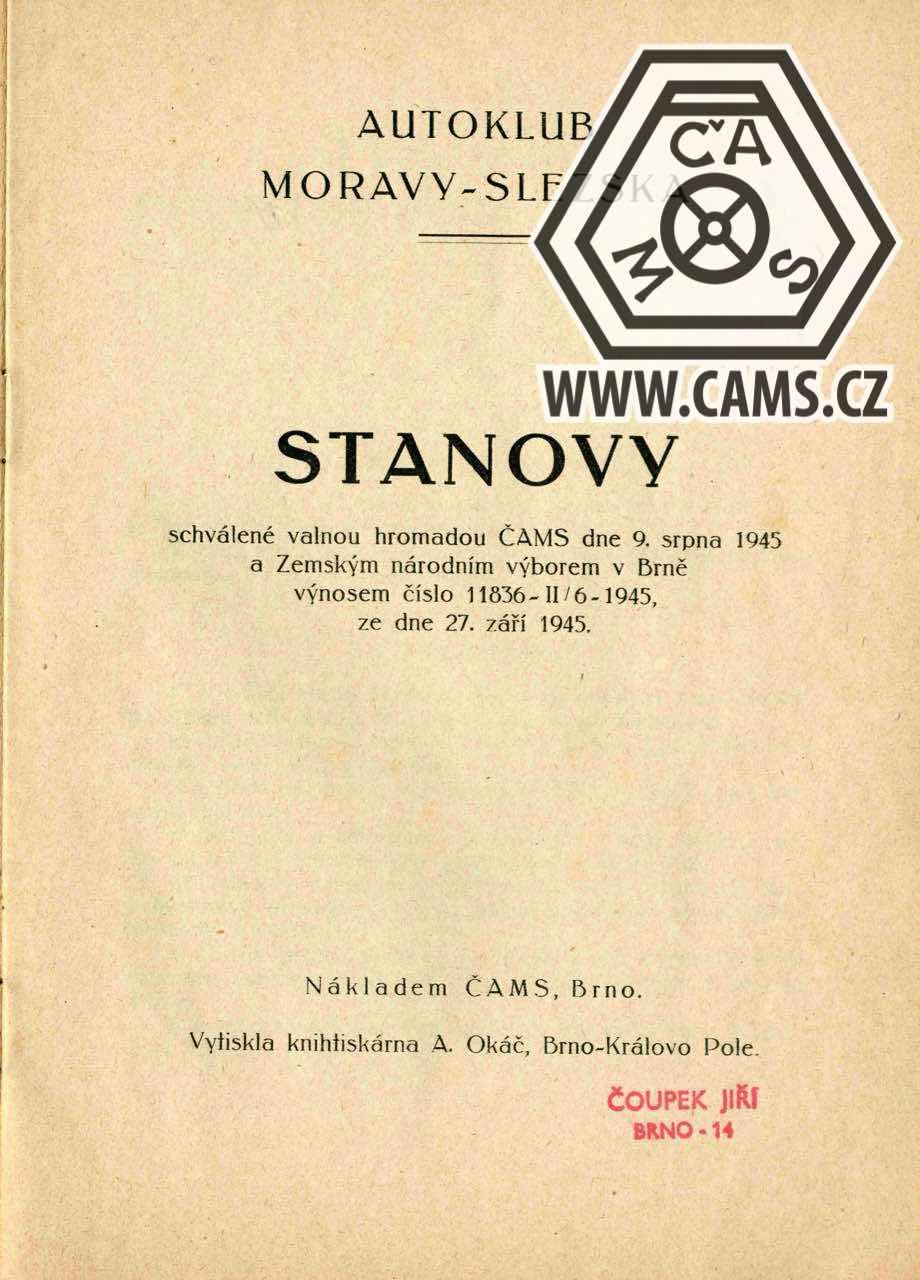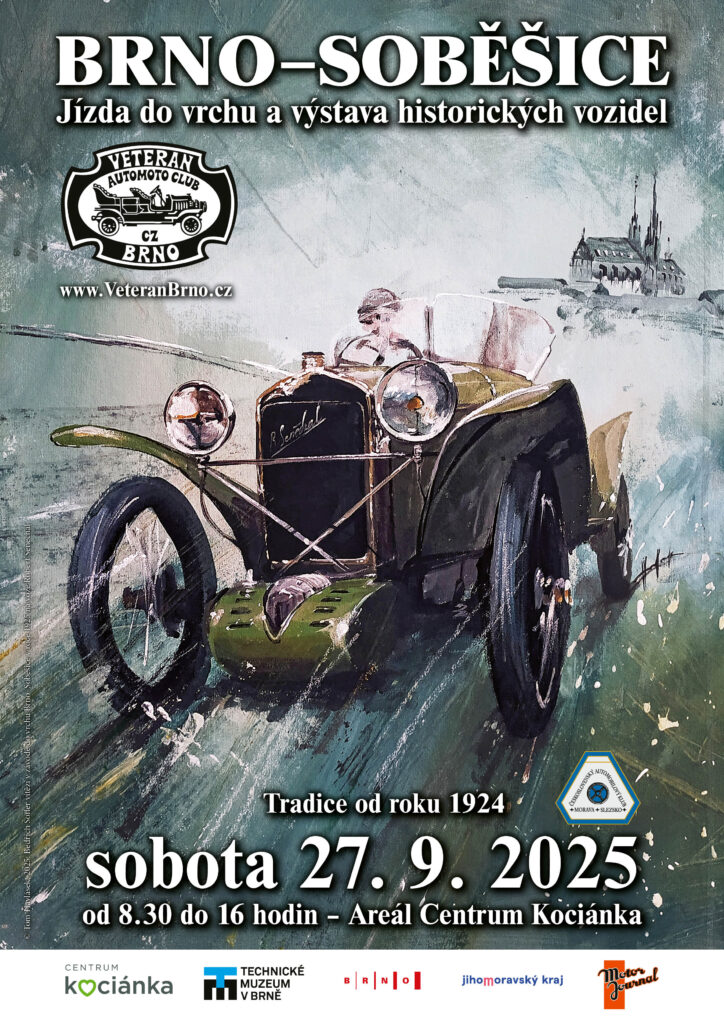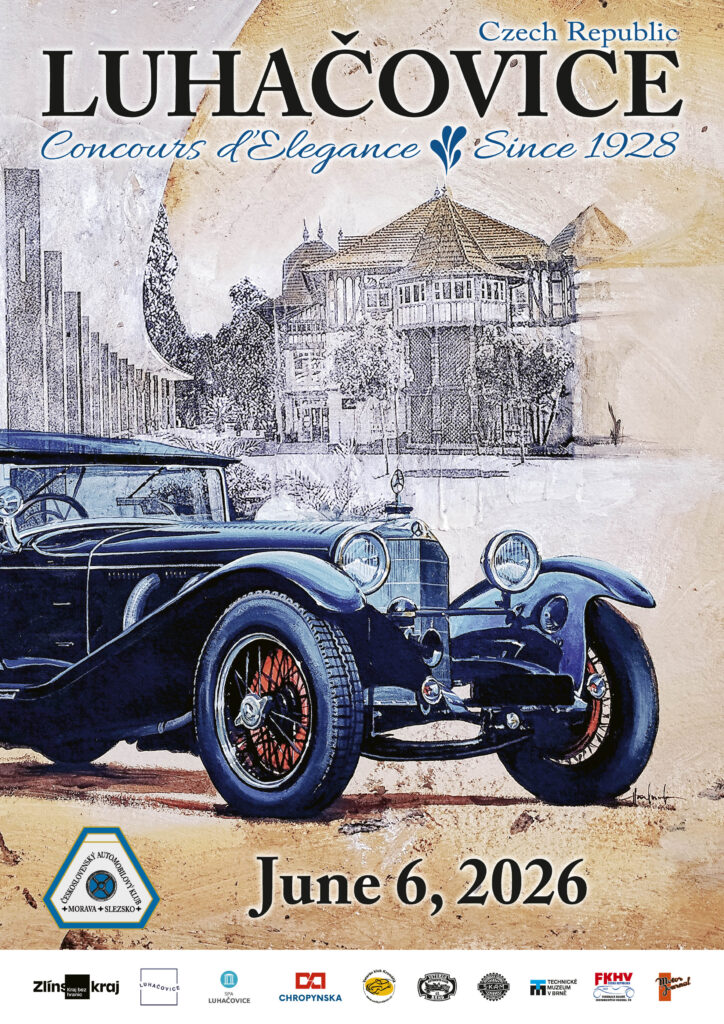More than 100 years of ČAMS
At the beginning of February 1923, it was founded in Brno Czechoslovak Automobile Club for Moravia and Silesia (ČAMS) was founded in Brno.
Already at the turn of 1920–1921, some Brno motorists, led by the builder Ing. Vladimír Müller and the editor of Lidové noviny Otakar Klusáček, requested that he establish a branch of the Autoklub Republiky czeskoslovakské (AKRČs) in Brno. The proposal was not accepted because the representatives of the Autoklub were convinced that "motoring will be better served if local affairs are taken care of by separate local clubs, and considering the situation in Moravia, he recommended that interested parties join the Moravian-Silesian Automobile Club (MSAC), which existed before the war, had a beautiful tradition and was very well-founded". Unfortunately, negotiations with this association failed because the MSAC members were not willing to accept the demands that the Czechs made as a condition for joining the club. For example, the German name should be expanded to include Czech, the club's official language should be German and Czech, they also requested a proportionally balanced representation of German and Czech motorists in the club's committees and commissions, etc.
In 1921, the “organizing committee” of the Czechoslovak Automobile Club for Moravia and Silesia was established, whose names were signed by: Tomáš Baťa (manufacturer in Zlín), Dr. Karel Absolon (custodian of the Moravian Provincial Museum in Brno), MUDr. Jan Šlechta (district doctor in Podivín), Ing. Vladimír Müller (builder in Brno) and Otakar Klusáček (editor of Lidové noviny in Brno). The first address of the club was the private address of committee member Ing. Müller (Brno, Huterova 12, tel. no. 1157). First, a public opinion poll was conducted and local motorists were contacted. The preparatory committee left nothing to chance and also contacted the relevant state administration bodies, such as the representatives of the city of Brno, the building office, etc. "Motorists and car owners in Moravia and Silesia still lack a lively and dynamic center adapted to the new conditions and new times, which would tenaciously and energetically follow and defend the interests of motoring. The importance of such a center cannot be denied, both in terms of sport and practicality."
The founding general meeting of the club was held on February 4, 1923 in the Švechatská pub on Jakubské náměstí. According to the protocol of the founding general meeting, representatives of the: Provincial Political Administration, Provincial Committee, the city of Brno (the senior building councilor Ing. Václav Racek was delegated to ČAMS for Brno, who was soon replaced in his position by Ing. V. Blatný), the Provincial Military Command, the Road Department of the Provincial Political Administration, the Provincial Building Office, the Postal Directorate, the Automobile Club of the Czechoslovak Republic (AKRČs) and the Moravian Aeroclub attended.
In his opening speech, Otakar Klusáček introduced those present to the reasons that led to the founding of the club. "Impossible street rules, disorder on the roads and poor road conditions force all Czechoslovak motorists to organize themselves and arrange for a remedy. And such is the mission of the club (…) to make the population of the Czechoslovak Republic aware that a car is not a lucrative means of transport, but a practical and fast vehicle for all those for whom time is money." Tomáš Baťa was unanimously elected chairman of ČAMS. Ferdinand Uhlíř became the first vice-chairman, and Dr. Karel Absolon held the position of second vice-chairman. Karel Štursa took on the role of club secretary. The membership fee was set at 250 CZK (registration fee 50 CZK), for companies the fee was the same (they had a higher registration fee of 250 CZK). Motorcyclists paid half.

At the time of its founding, the club had a total of 116 members. ČAMS members naturally had a discount on all club events. The club also negotiated various other benefits for them, for example on insurance - the contractual insurance company Riunione Adriatica di Sicurta in Brno offered club members discounts of 20–25% on insurance for passenger cars. For passenger tricycles and motorbikes it was 10–20 %, as well as discounts at various retailers on car equipment, fuel, and they also had cheaper, for example, the issuance of triptychs (international customs clearance for motor vehicles for travel abroad and back). For its members, ČAMS issued triptychs for 200 CZK (cars), 100 CZK (motorcycles) and for non-members for 600 CZK, etc. At the end of 1923, the club had 174 members and five visiting students, mostly from the ranks of businessmen and prominent Brno or Moravian personalities (for example, MUDr. Jaroslav Bakeš, Gustav Frištenský) or the aristocracy (Emanuel Collalto Et San Salvatore, František Harrach, Bedřich Chorinský and others). In addition to individuals, the club also included prominent enterprises, such as the Mining and Metallurgical Company in Brno, the Hrček and Neugebauer company, the Kopřivnická road in Brno, the Moravian Agrarian and Industrial Bank in Brno, or Zbrojovka Brno.
Shortly after the club was founded, representatives of the ČAMS signed a “unified inter-club agreement” with the AKRČs. However, already in 1926, the club delegates called for new negotiations and, together with other clubs, demanded a regulation of the relations between the associated clubs and the AKRČs. On the basis of these negotiations, a new cartel agreement was created (Cartel of the AKRČs and Associated Clubs). However, the complex relations with the Autoklub and other significant “players” in this field would require a separate book and are therefore not the subject of this text.
An important element in the club's activities were the Sports and Technical Commissions, which were primarily responsible for organizing sports events, tournaments, professional exhibitions, etc. They were also supposed to ensure enough garages for members and prepare a directory of garages in Moravia and Silesia. The commissions included, for example, the Brno racer Bedřich Soffer, the chief director of Čs. Zbrojovka in Brno Ing. Klement Růžička, the designer Ing. Břetislav Novotný, MUDr. J. B. Rudolf, JUDr. Otto Šulc and others.
At the end of 1926, the ČAMS Operational Commission was also established, consisting of: Dr. Otto Šulc, Bedřich Soffer, Ing. Vladimír Müller, the chief building councilor Ing. A. Chlaň, the police councilor and head of transport in Brno Dr. A. Panenka, the chief provincial building councilor Ing. Wolfgang Flek and others. This commission dealt with the issues of building and maintaining roads, creating a new street order in Brno in cooperation with the police headquarters, training for judges, marking state roads, etc.
All commissions submitted proposals not only to the AKRČs., but also to superior authorities. The ČAMS committee also decided to pay a monetary reward to road workers for the best-maintained section of the road in order to strengthen interest in the condition of the roads. For this purpose, a special commission was created. The commission consisted of three ČAMS members, three representatives of the MSAC, one delegate of the provincial political administration and one representative of the provincial committee. ČAMS and MSAC shared in the rewards equally.
ČAMS expanded its membership base, the ČAMS Motosekce was established, and it also succeeded in establishing branches of the club in Moravia and Silesia. In 1926, it already had a total of six branches (Branch for the Bohemian-Moravian Highlands in Jihlava, Hanáčka branch in Kroměříž, Středomoravská branch in Přerov, Valašská branch in Vsetín, Baťa branch in Zlín, and the branch in Moravian Ostrava). A year later, the number of club members exceeded the "magic" threshold of a thousand (1097) and continued to grow. At the end of 1929, ČAMS had a total of 1380 members (1342 active, 33 extraordinary, 4 founding and 1 correspondent). Since 1926, the club has published its own periodical called Věstník ČAMS. It was published once a month as a newsletter for members with information about general meeting dates, activities and sporting events, as well as various benefits and discounts that it had negotiated for its members.
If we study the preserved lists of ČAMS members, we will of course find, in addition to the previously mentioned representatives of the business elite and major companies, also women. In most cases, these are educated women from well-off families, mostly businesswomen, doctors, architects, etc. In 1923, only one woman is listed in the list of members: Ing. C. Antonie Jebavá, daughter of the great woodcutter Alois Jebavá and a student of mechanical engineering and electrical engineering at the ČVŠT in Brno. This lady is also recorded in the membership base in 1924. Unfortunately, we lack documents for the following year. Antonie Jebavá no longer appears in the list of ČAMS members from 1926, but three other women are listed: the owner of a sanatorium in Tatranská Lomnica Ph. Mr. Zdenka Becková-Zelená, the large landowner Marie Mitisová from Klobouky near Brna and Bohumila Křížová, the wife of a notary from Příbor. However, this does not mean that there were not more enthusiastic female motorists in Brno or in Moravia and Silesia. The proof is not only in period photographs, but also in the names in the lists of members from later years. In 1927 the number rose sharply to 16 women and in 1930 the ČAMS already had a total of 29 women among its members, including Eliška Junková.
Initially, ČAMS had only very modest premises at Jakubské náměstí No. 5. As the organization's activities and the associated agenda grew, the need for more dignified and suitable premises for the club and also for the planned members' library and reading room increased. In August 1926, the ČAMS committee managed to rent spacious rooms in the palace of the Česká banka Union in Brno at Beethovenova Street No. 4. Two years later (September 1, 1928) it moved to the newly built Hotel Passage at Nové Street No. 23. Here, important members of ČAMS played a role – the well-known Brno builder Antonín Müller and his son Ing. Vladimír Müller, who built the Hotel Passage (at that time one of the most modern palaces). The hotel's period advertising brochure states: "The hotel is the headquarters of the Czechoslovak Automobile Club for the Moravian-Silesian region and the official station of almost all European automobile clubs. Box parking and garages for 30 cars are available for guests." In 1932, the club's name was changed to the Czechoslovak Automobile Club for Moravia and Silesia. A year later (October 1, 1933), ČAMS moved for the last time, this time finally to its own building at Na Baštách Street No. 8.
The first international event organized by ČAMS was a one-kilometer speed race with a flying start in Ledce near Brno on May 13, 1923. ČAMS's social and sports activities were very intense from the beginning; on May 16, 1923, a lecture on the Moravian Karst (Dr. Absolon) was held, followed by the first joint ride of club members to Macoch. In September (September 22), they went to Zlín, where a tour of the Baťa plant was part of the program. A year later, it organized two important events: the 1st International Hill Race Brno–Soběšice (on May 4, 1924) and the 1st International Automobile Exhibition in Brno, which was intended to encourage public interest in motoring. The hill races were a success and were organized regularly until 1929.
In 1928, the Sports Commission independently organized a total of nine sports events (an international race on the Praděd circuit on June 3, 1928, the Brno–Soběšice race, a star race to Luhačovice, and automobile and motorcycle tournaments in Zlín, Prostějov, Luhačovice, Kroměříž, Moravská Ostrava, and Hodonín). The club suffered great losses that year in the form of the deaths of two prominent personalities and members of the ČAMS – Čeňek Junek and Bedřich Soffer.
On September 5, 1929, the ČAMS ceremonially unveiled a monument to the tragically deceased Soffer at the scene of the accident (the Brno–Olomouc state road near the village of Tvarožná). At the same time, they sent a delegation to unveil a memorial plaque to Čeňek Junek at the Nürburgring.
The circuit at Praděd was run only three times, the last time in 1929 with a large financial deficit. There were several reasons, including disagreements between the organizing clubs MSAC and ČAMS about the quality of the course and the further form of the race, etc. After these experiences, the members of the ČAMS Sports Commission were looking for a course that would be not only challenging and interesting, but also close to a large city. The intention to organize international circuit races in Moravia near Brno was revived. At first, among other things, they had to deal with the negative attitude of the AKRČs, which did not even recommend holding this race. ČAMS resolved the situation by obtaining official patronage of the race directly from President TG Masaryk. The date of the first year of the Masaryk Circuit was set for September 28, 1930. The track measured a total of 29 km 142 m. The Masaryk Circuit became the flagship event of the ČAMS and one of the most important automobile races in the Czechoslovakian Republic in the interwar period (it was held until 1937).
In addition to major races, ČAMS organized regular automobile and motorcycle tournaments for its members, first in Brno, and later also at individual branch locations. These were races of skill and regularity that were very popular with spectators. Among the many other events that the club organized and later became traditional, we can name: the Moravian Reliability Competition (in 1929, it was held for the first time on a 630 km long track), the Concours d'Elegance (in Brno and Luhačovice), the opening of the motorcycle season in Brno (in cooperation with MSAC and the Czechoslovak Motorists' League), a motorcycle race on a speedway in Olomouc (for the first time on May 17, 1931), etc.
As the membership base continued to grow, ČAMS created a so-called Social Committee, which sought to deepen contact between club members through its activities. For example, it organized a get-to-know-you party, introduced regular debate parties (with a motoring theme), etc.
The Operations Committee (headed by JUDr. Otto Šulc) was not far behind the Sports and Social Committee, and in 1931 it "boasted" that ČAMS was the only one after the Prague Automobile Club to carry out systematic marking in the Moravian-Silesian Land on more than 13,000 km of district roads. At that time, ČAMS had a total of 1,406 members, secretariats and branches throughout the Moravian-Silesian Land. It tried to fulfill the motto "Service to members - service to motorists" with its activities.
Over the years, the first chairman of ČAMS, Tomáš Baťa, became an honorary chairman (in 1930), and Ferdinand Uhlíř was elected to replace him, who held the position of chairman until 1935, when he was replaced by Ing. Vincenc Vrba. After 15 years, ČAMS also ended its active activity. An extraordinary general meeting (9 June 1939) under the leadership of chairman Ing. Vincenc Vrba approved the dissolution of ČAMS, because negotiations to merge it into a single organization had failed. "The club was founded at a time when gentlemen drove cars. Founded by gentlemen, the club has maintained this tradition throughout its existence."
Interestingly, the club was not actually liquidated at that time, as on September 6, 1939 and again in 1941, the authorities reported that the club was still in liquidation. The reason was an unresolved lawsuit for damages, which was being conducted against ČAMS as the organizer of the Masaryk Circuit and against the driver Lang, who crashed during a race at the Masaryk Circuit and injured spectators in the audience.
After the war, ČAMS resumed its activities, which had been “forcibly terminated” during the occupation. With the consent of the Provincial National Committee, it organized a general meeting on August 9, 1945, at which Ing. Eduard Zacpal was elected as the head of the renewed club, Prof. Dr. Václav Neumann (rector of Masaryk University) as vice-chairman, and Karel Štursa as executive director. They changed the name of the club to the Autoklub Moravy-Slezska because they advocated that after the war only three strong provincial organizations associating motorists should be established (for Bohemia, Moravia and Silesia, and Slovakia). However, it was only the swan song of the once strong club. In 1948 (May 4), it was forced to merge with AKRČs, and in 1951 the history of independent motoring organizations ended completely. From then on, it was possible to carry out the relevant activities only under the banner of state centralized organizations (first the Voluntary Union of People's Motoring, later Svazarm).
Sylvie Zouharová Dyková
(Technical Museum in Brno)
Sources and literature used:
MZA – Brno Police Headquarters fund, Brno City Archives – fund A1/28, Czechoslovak Automobile Club of Moravia and Silesia
Yearbook of the ČAMS 1923, 1924
Bulletins of the ČAMS 1926–1934
People's newspaper
The article was published in the magazine Motor Journal No. 2/2023
ČAMS was revived again in 2014 on the occasion of the Brno Grand Prix Revival at the Masaryk Circuit. Since then, it has been actively working to resurrect the traditions of the First Republic club, organizing events and exhibitions for owners of historic vehicles.
